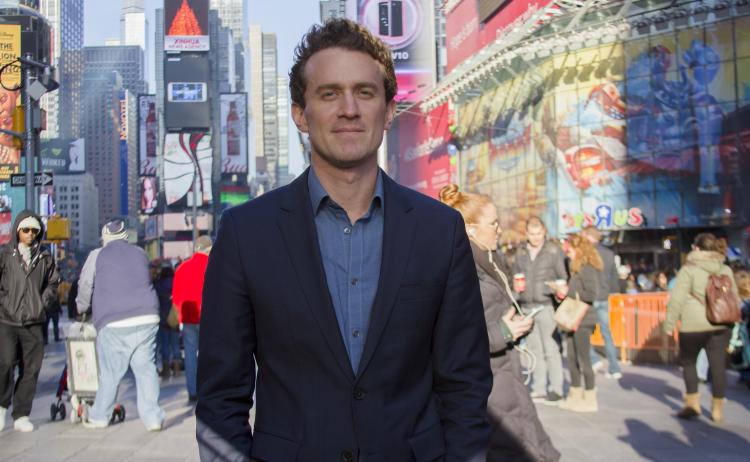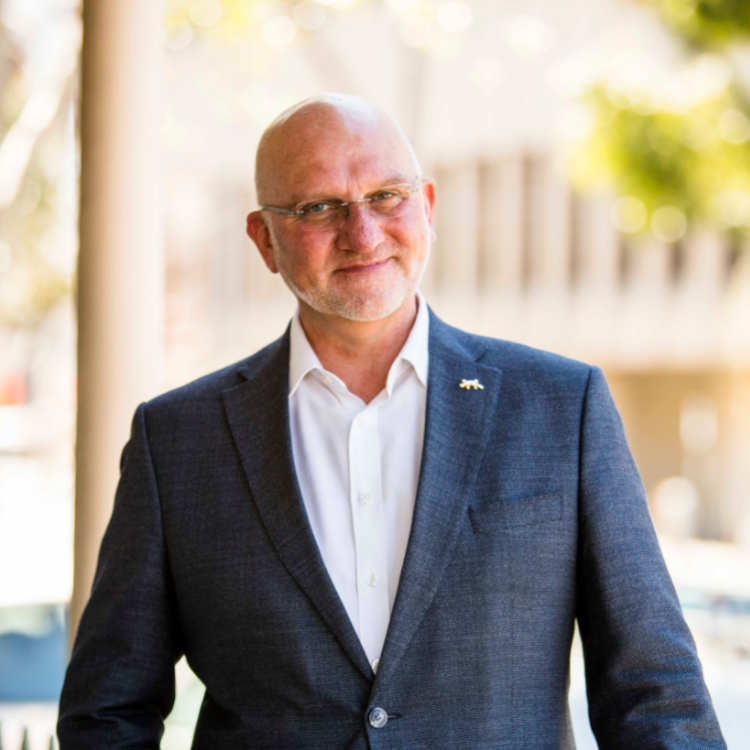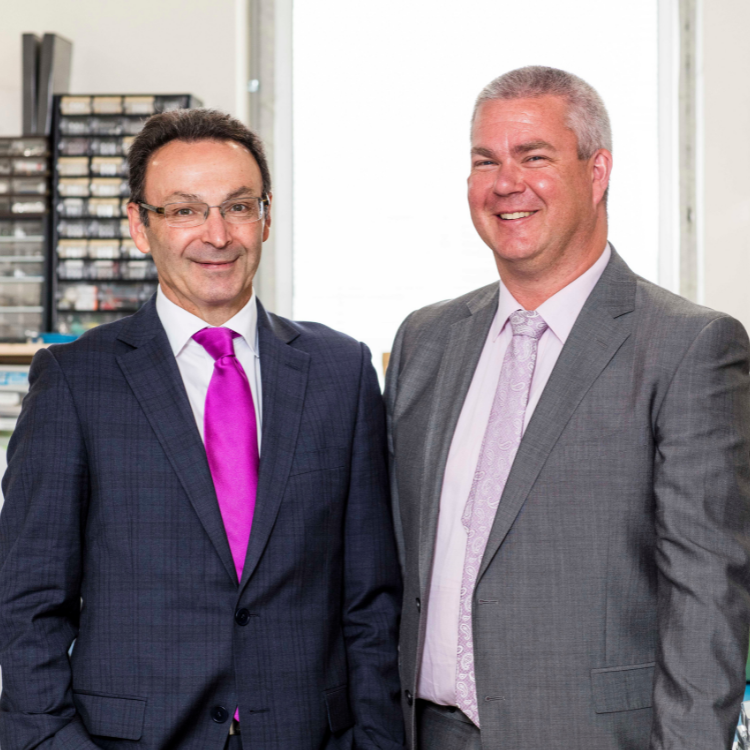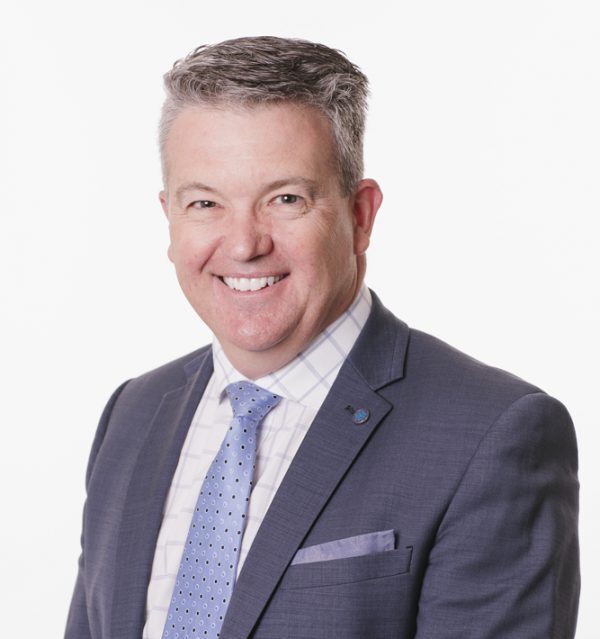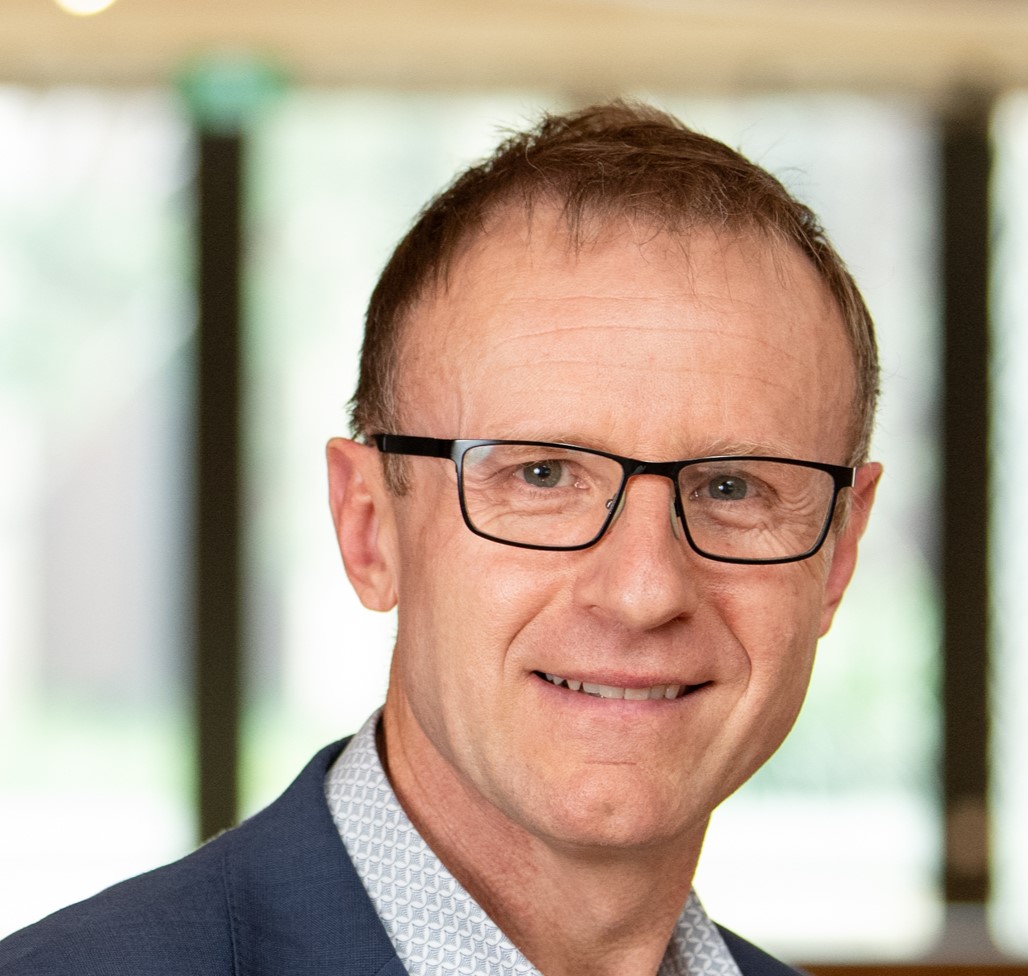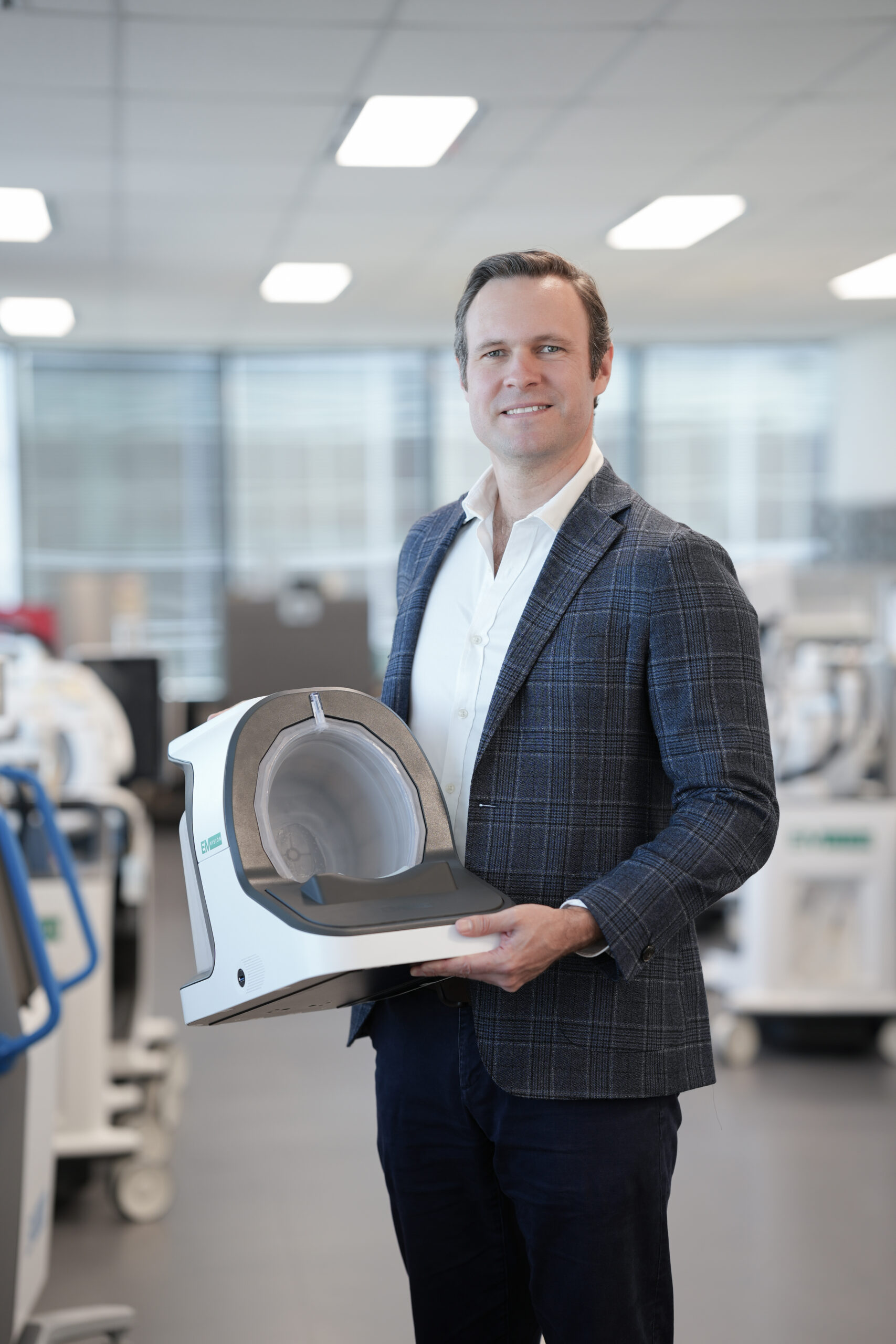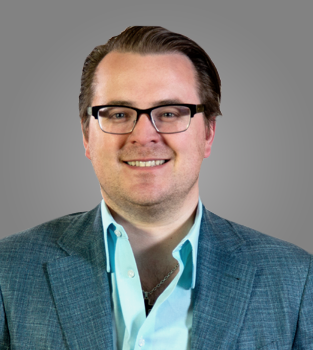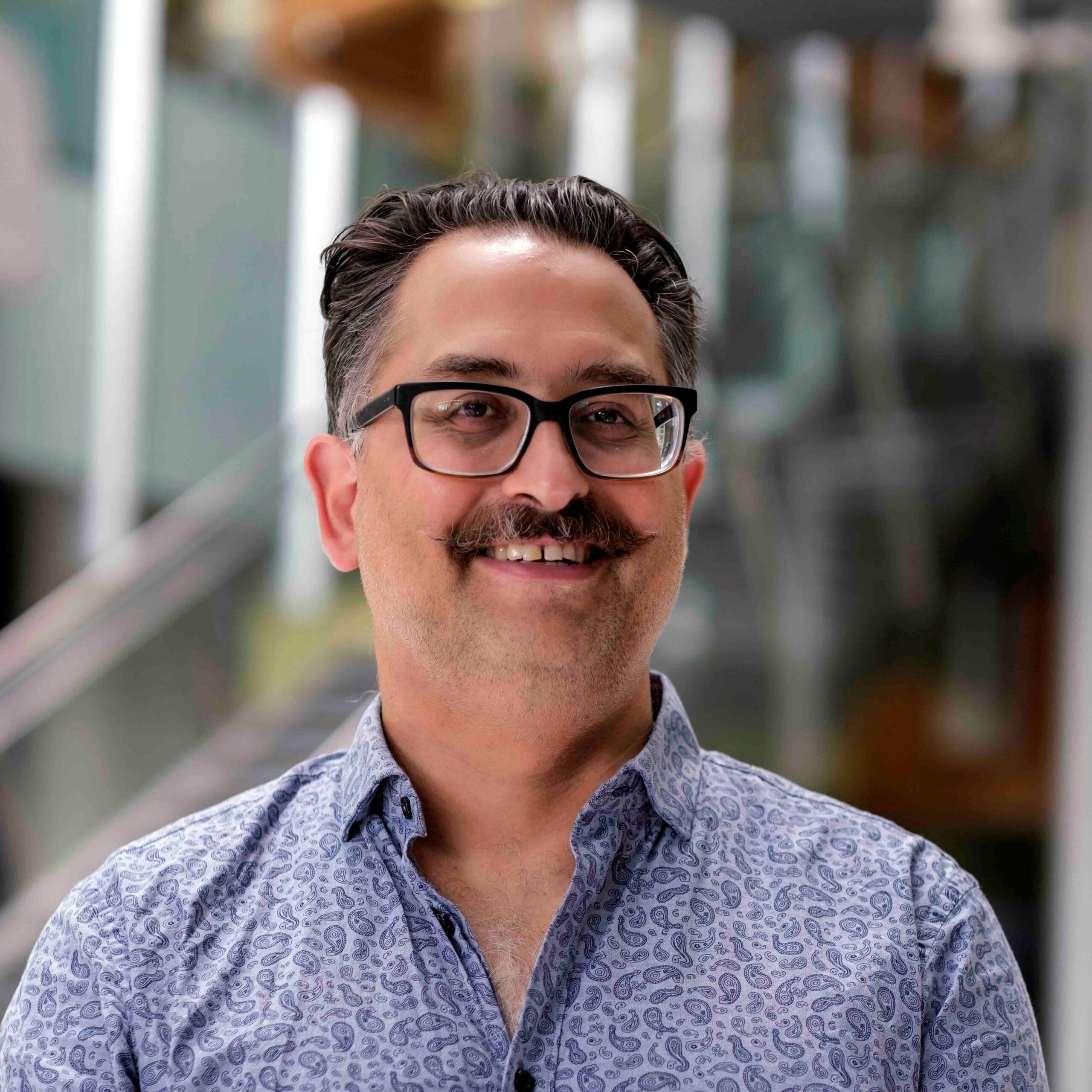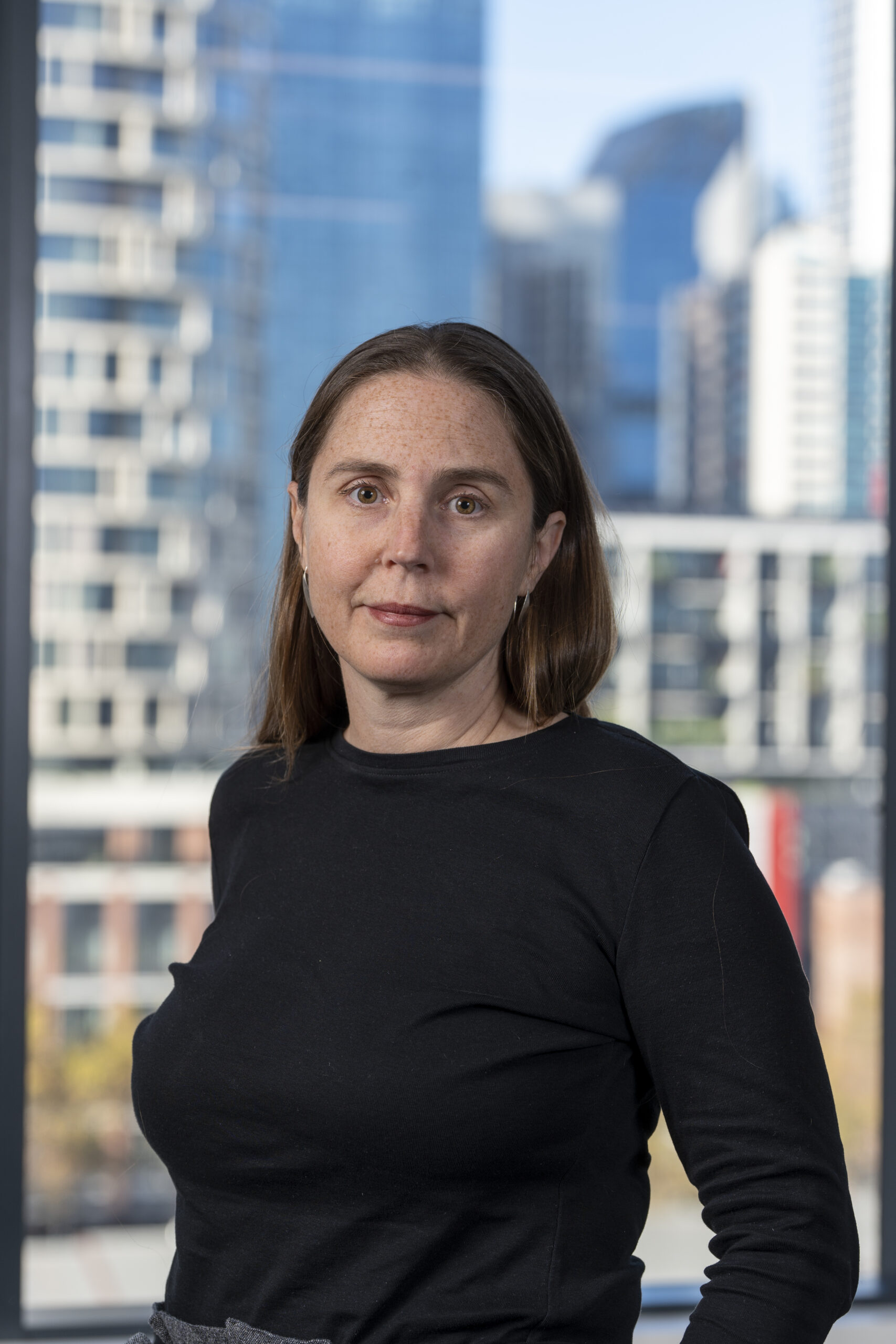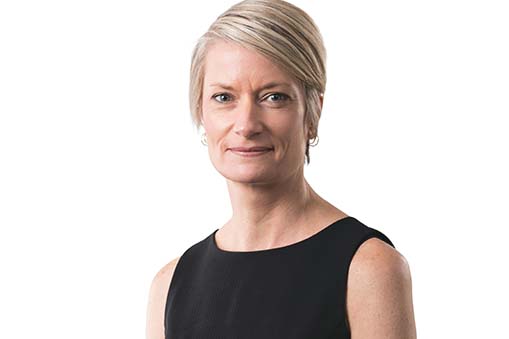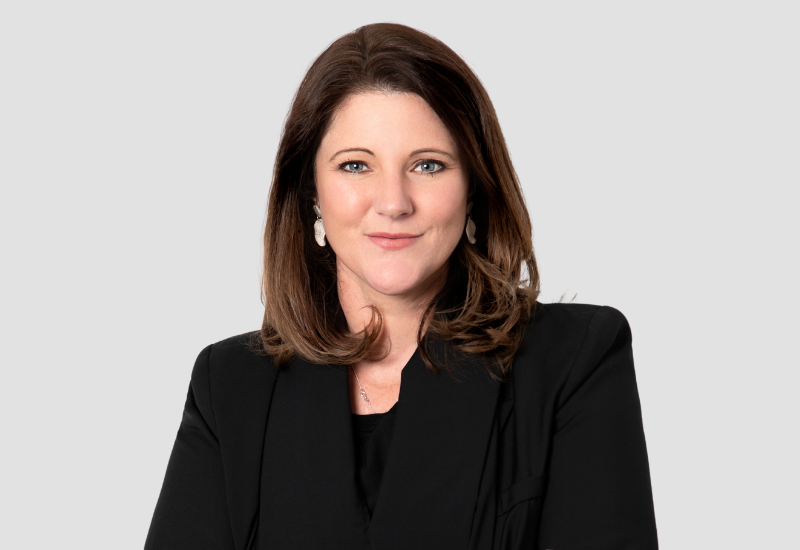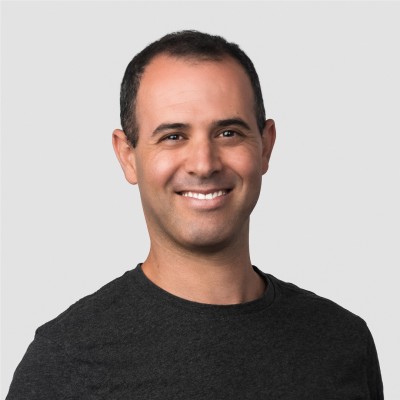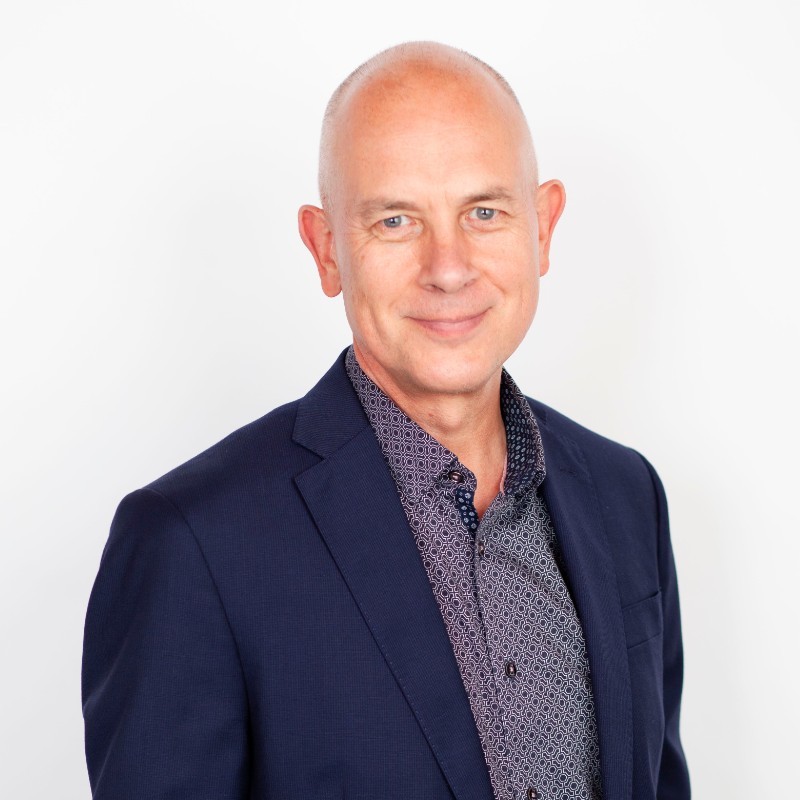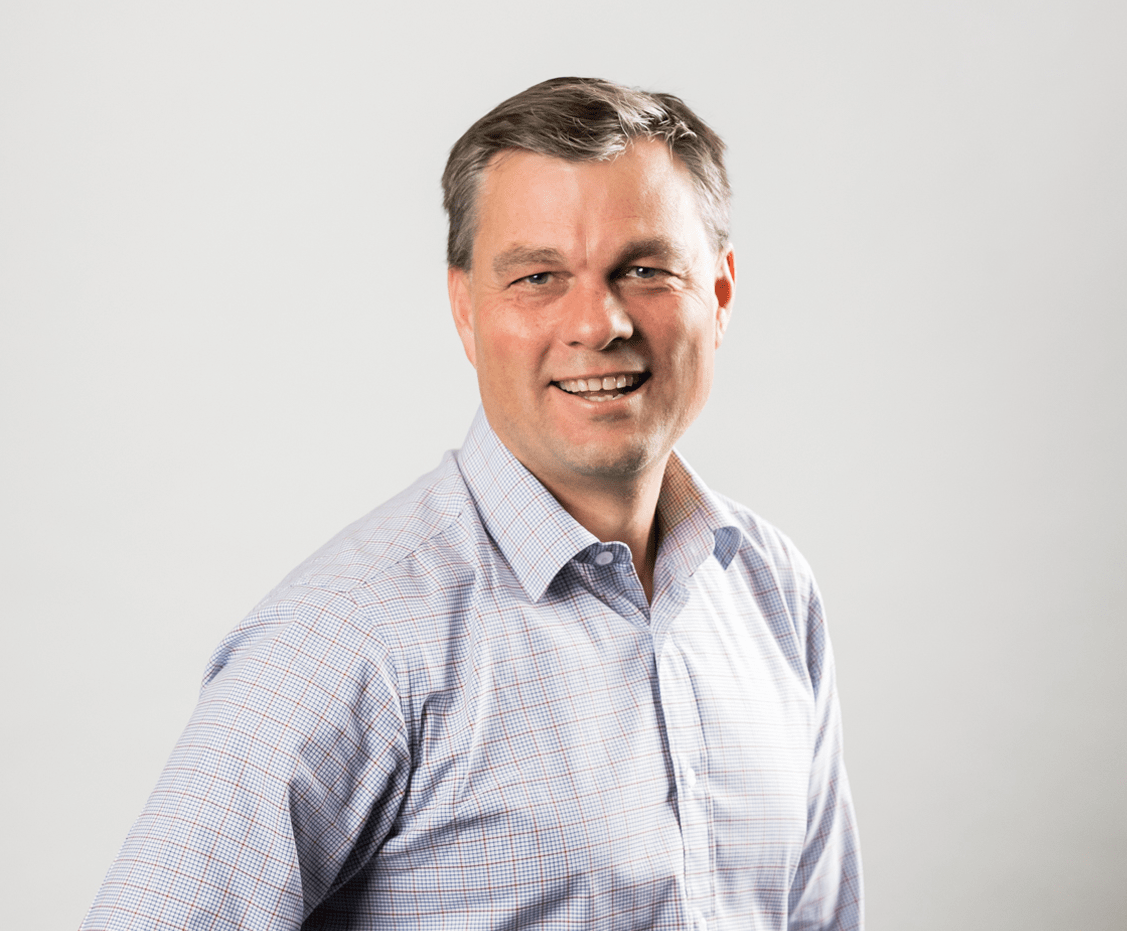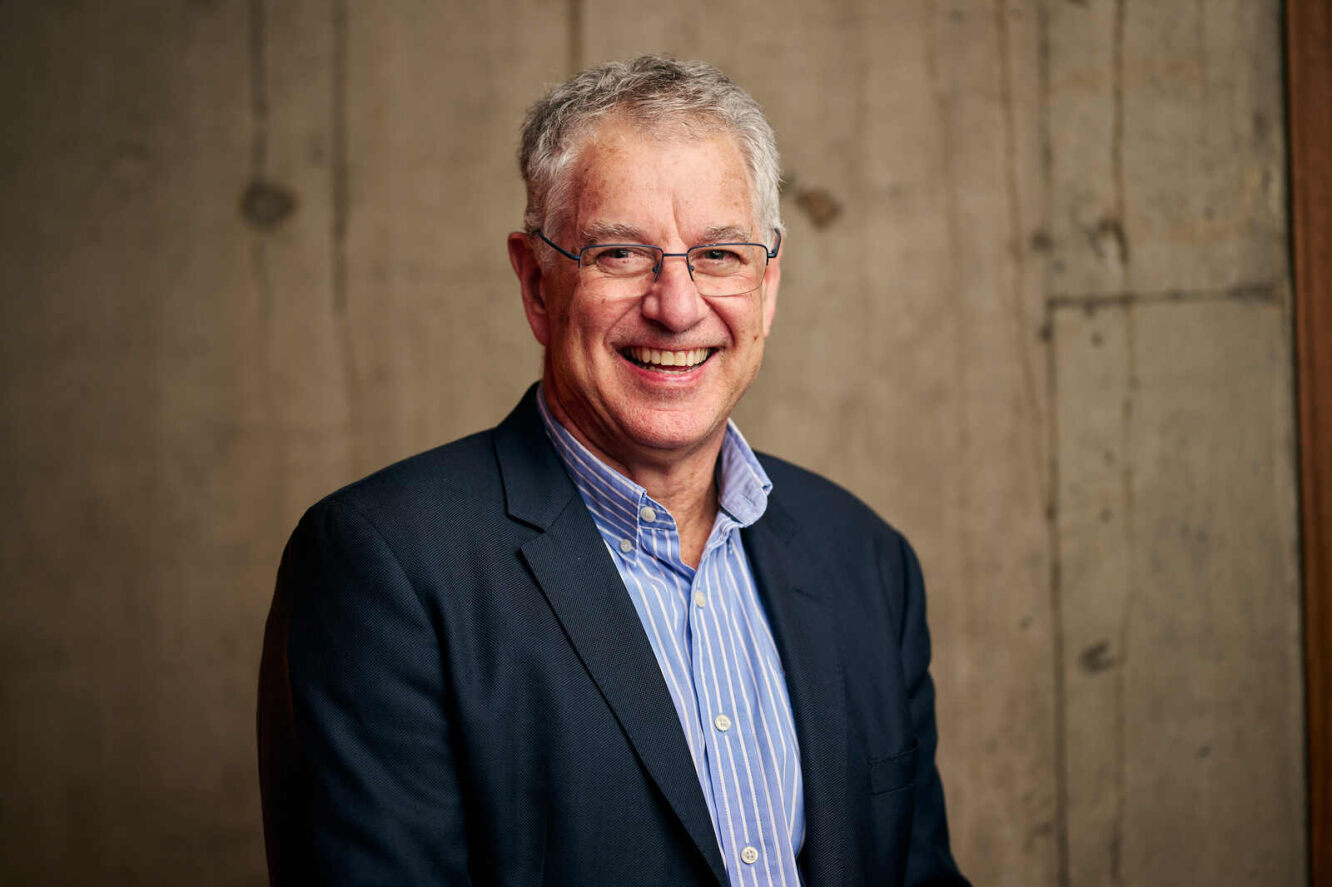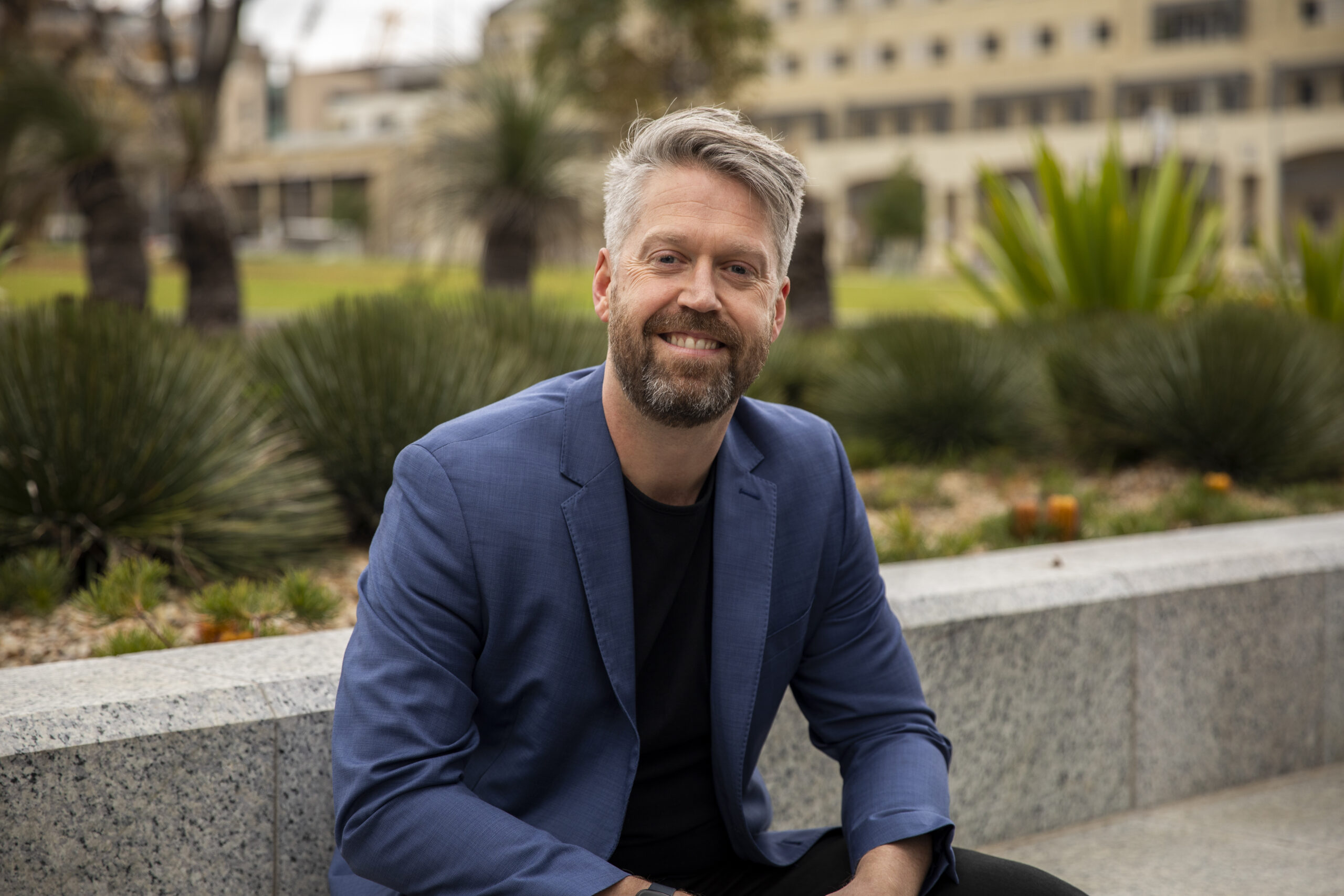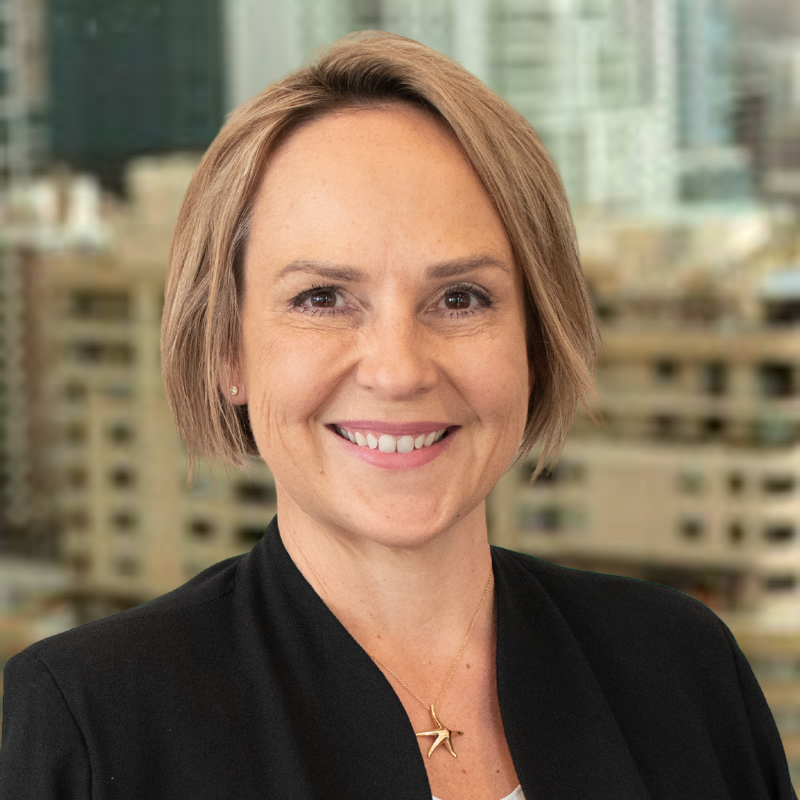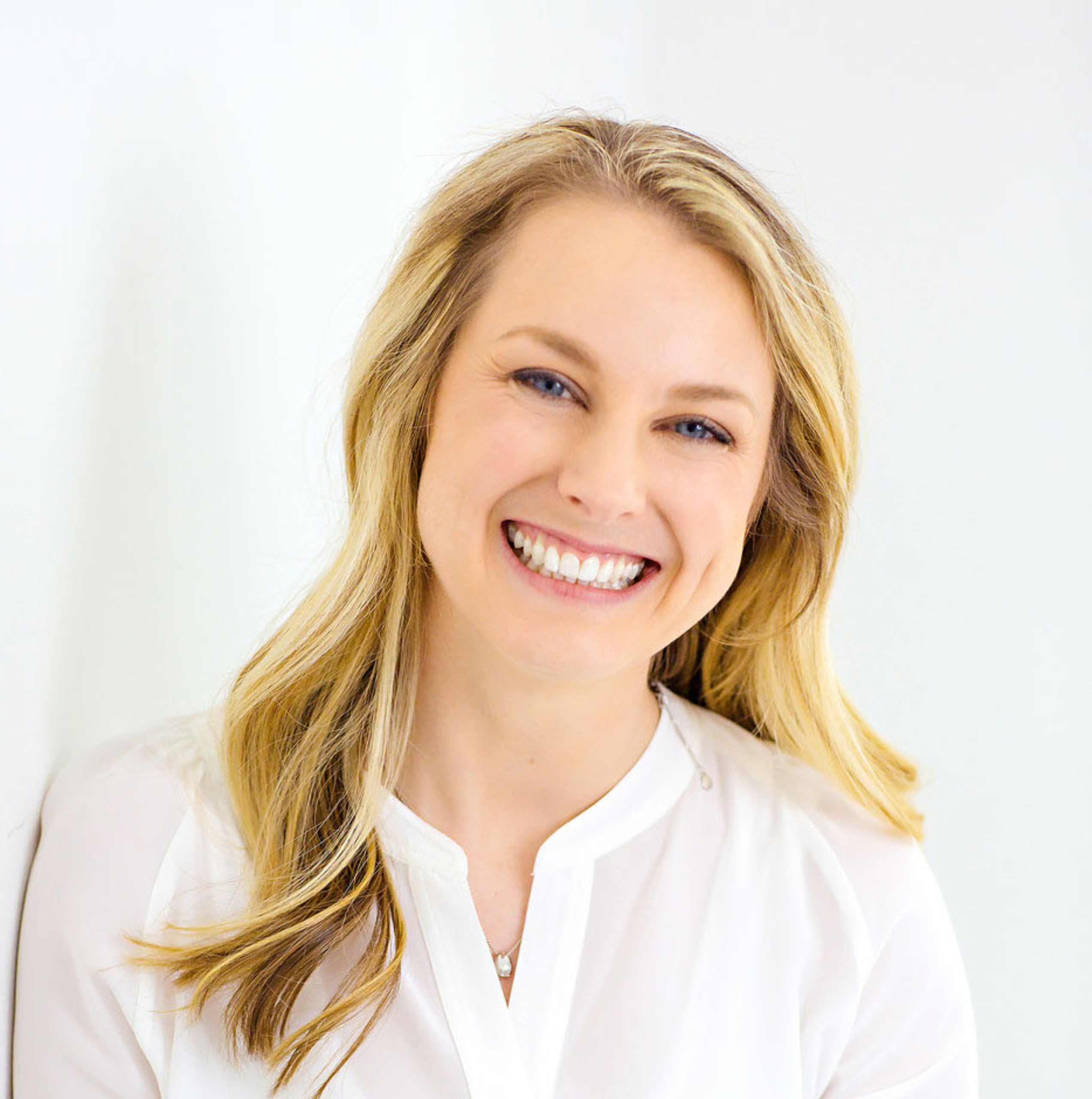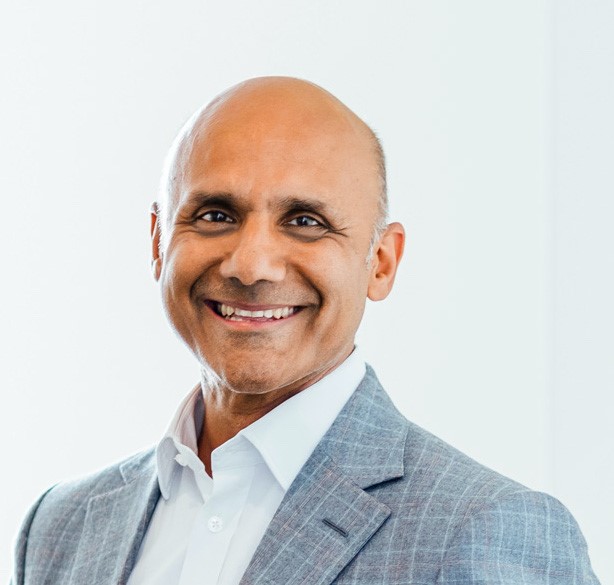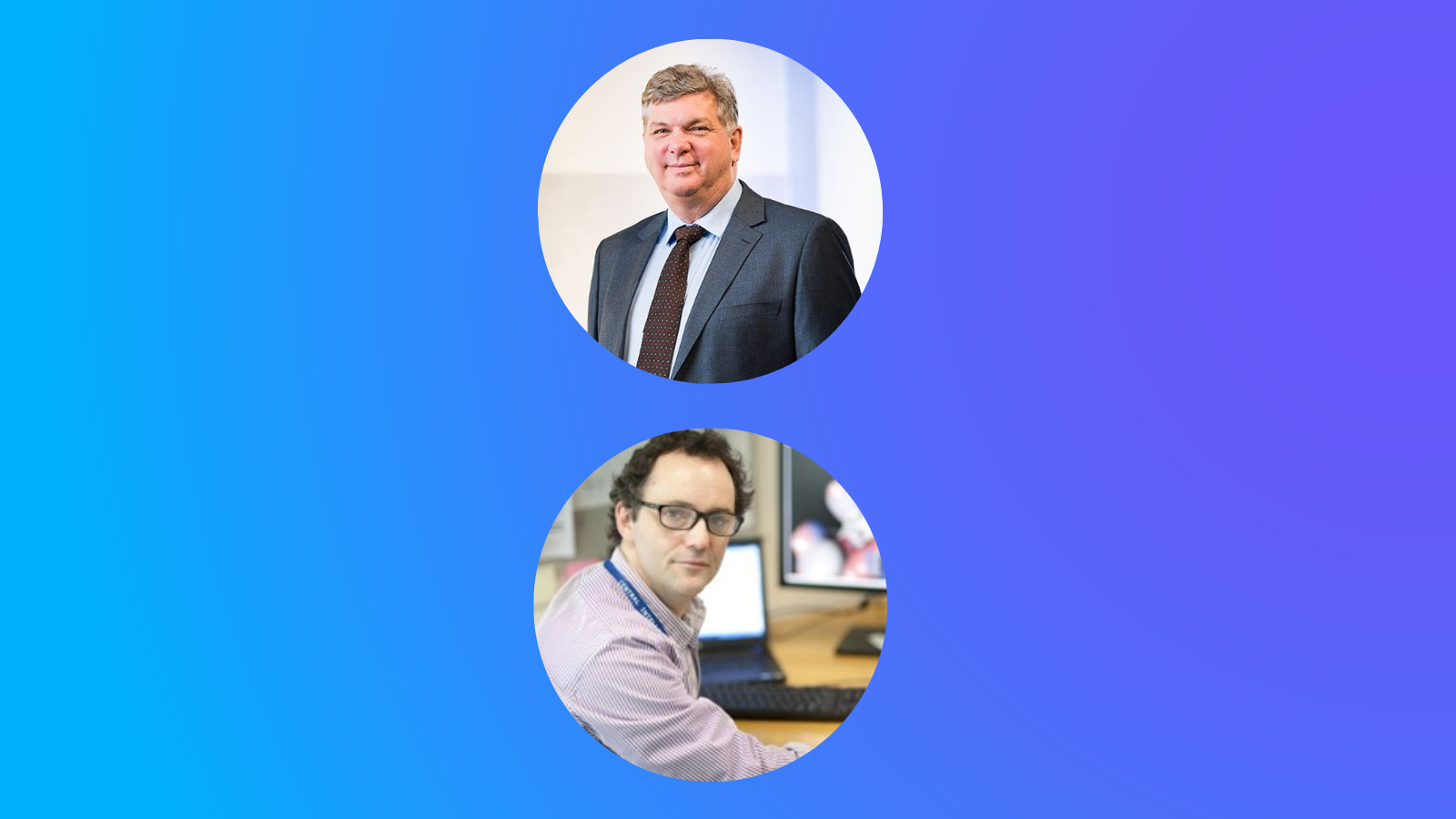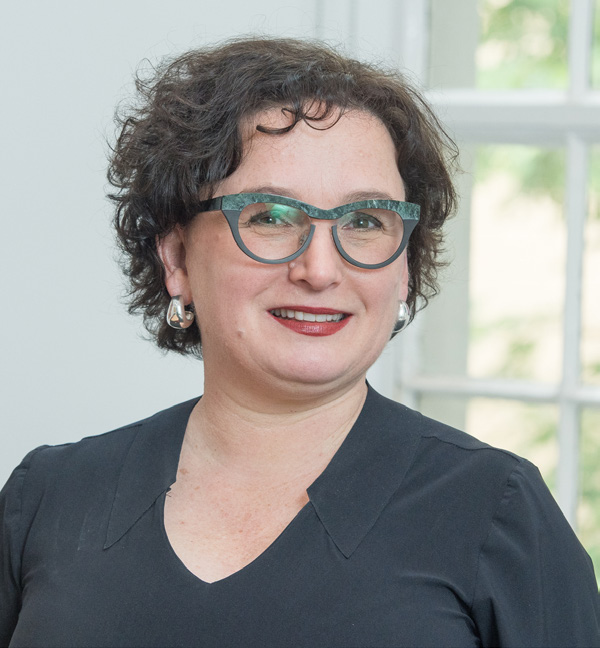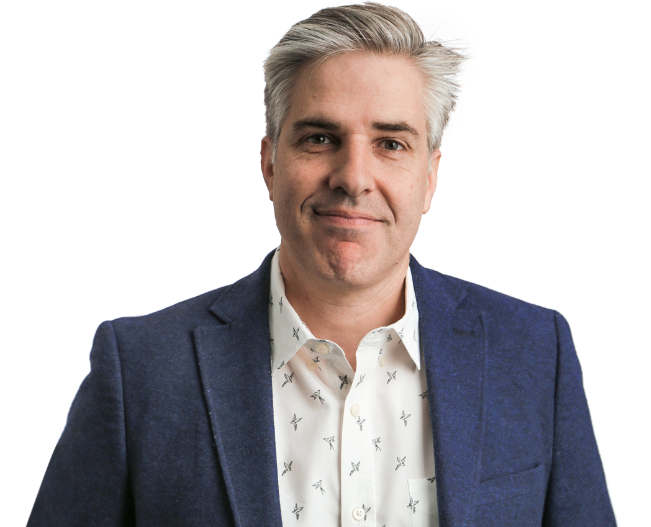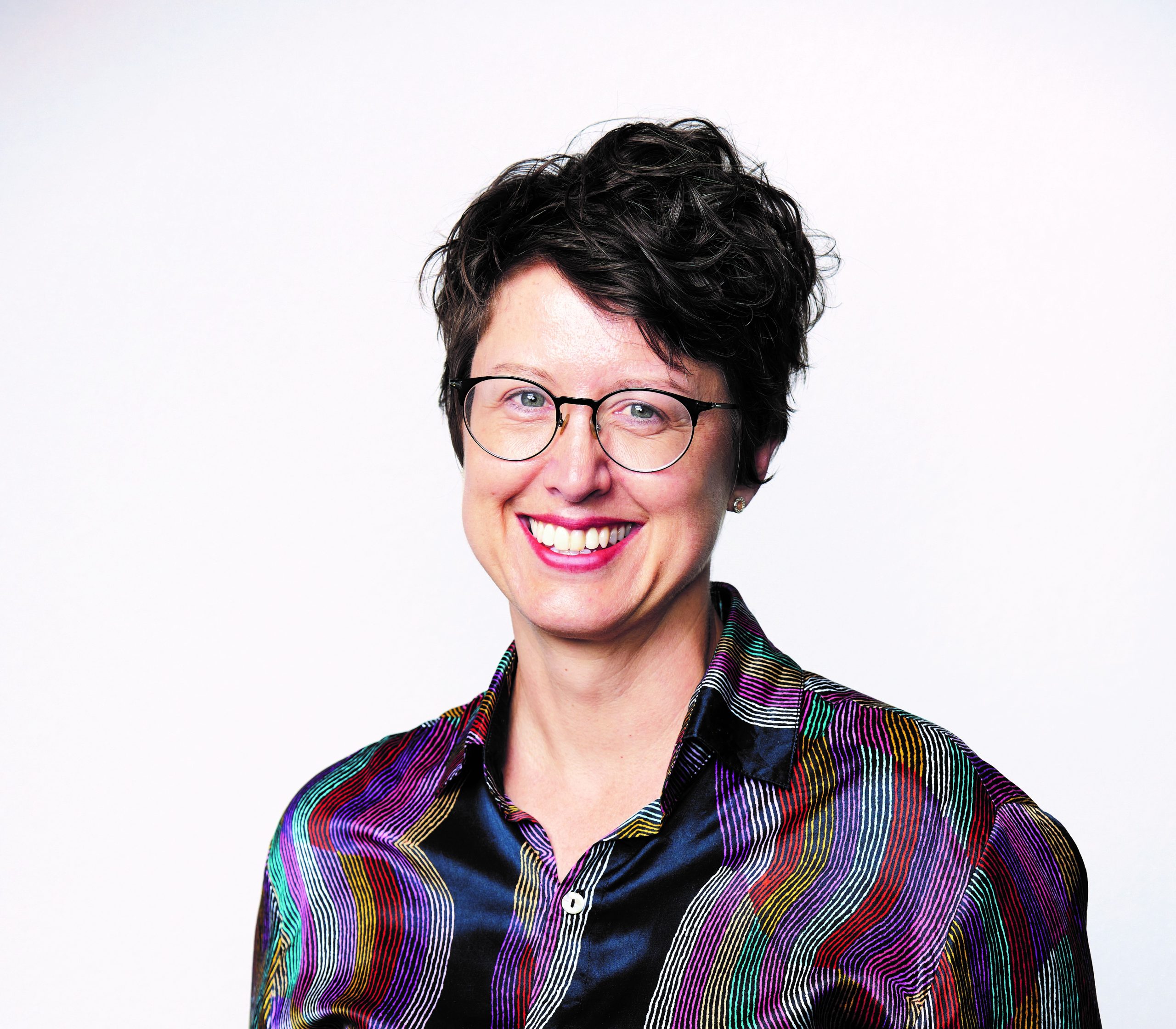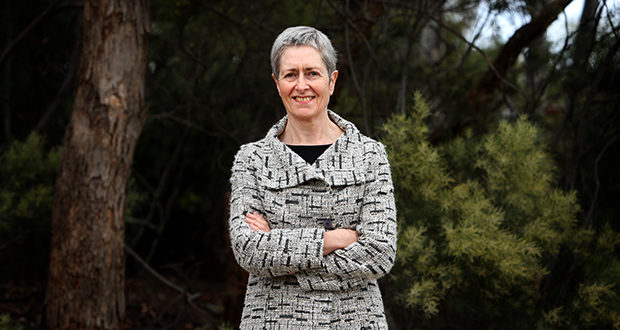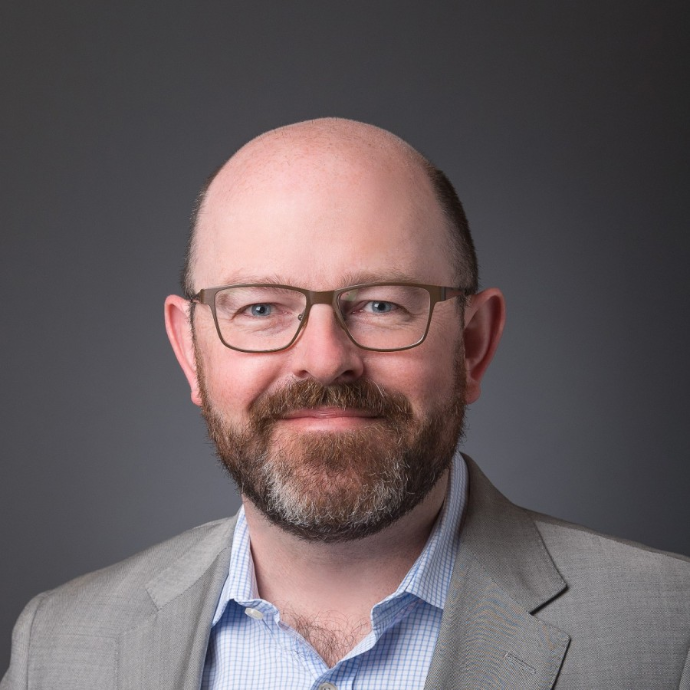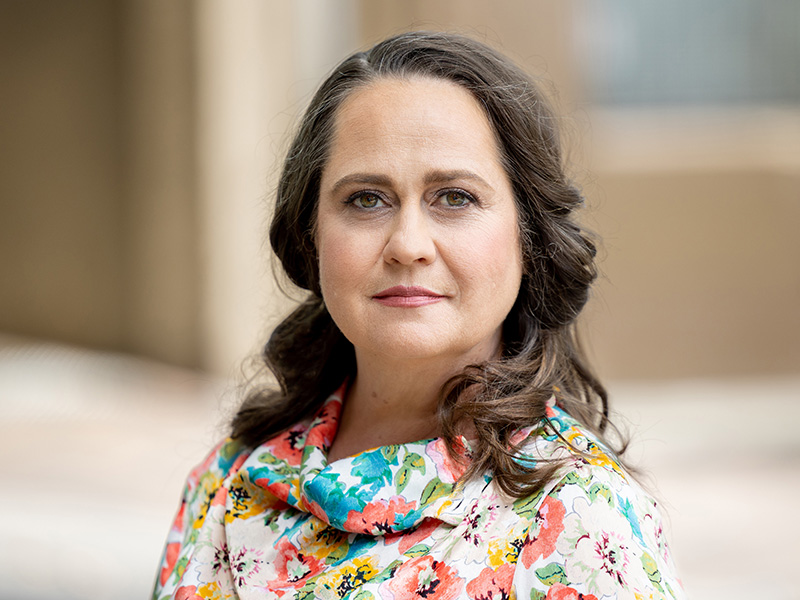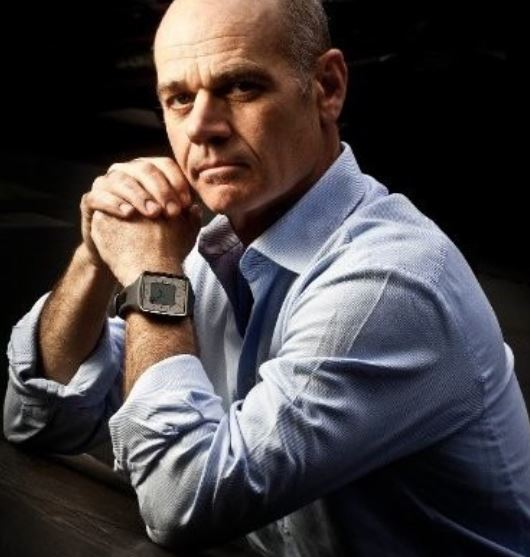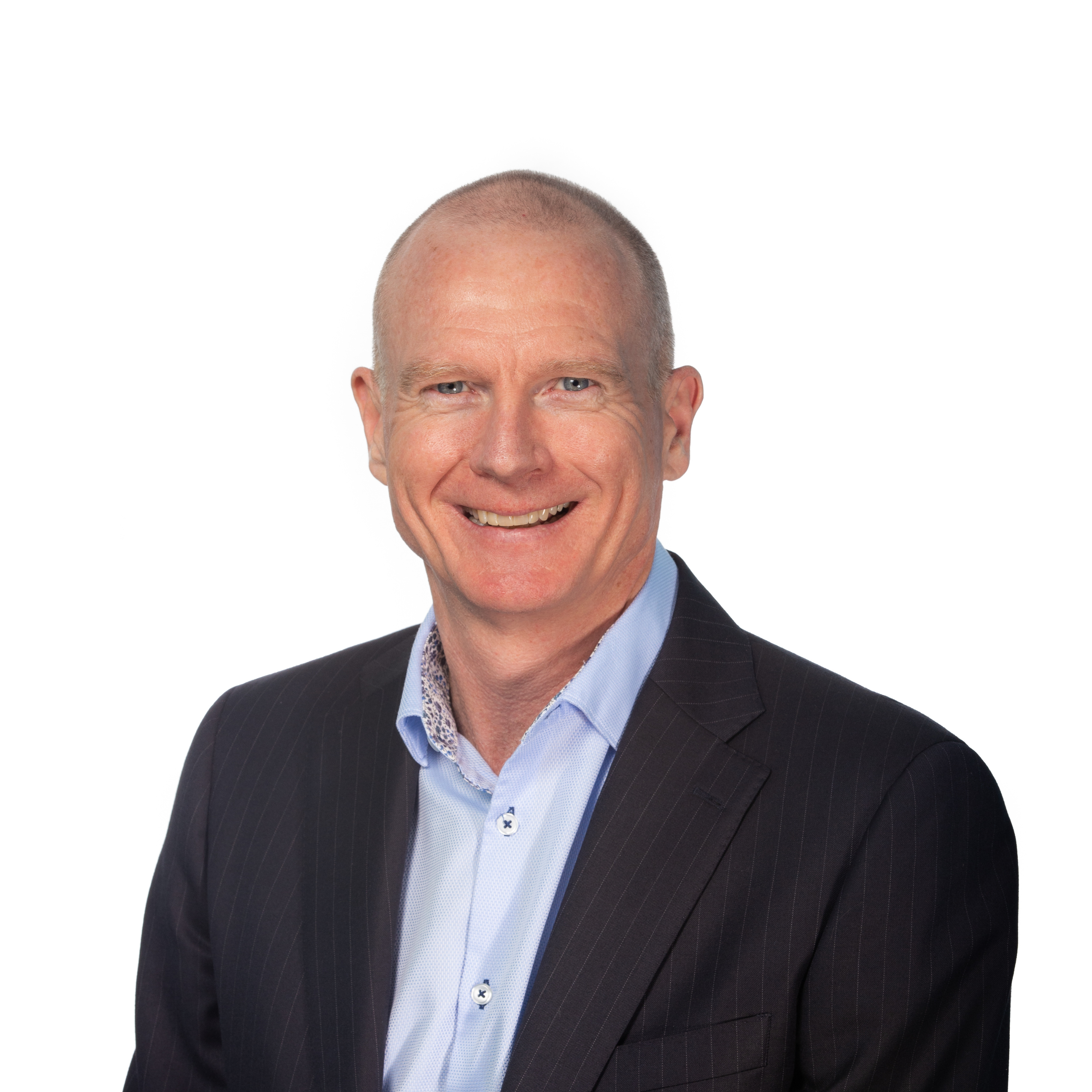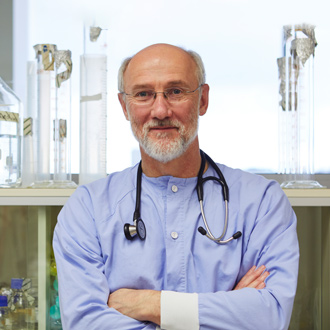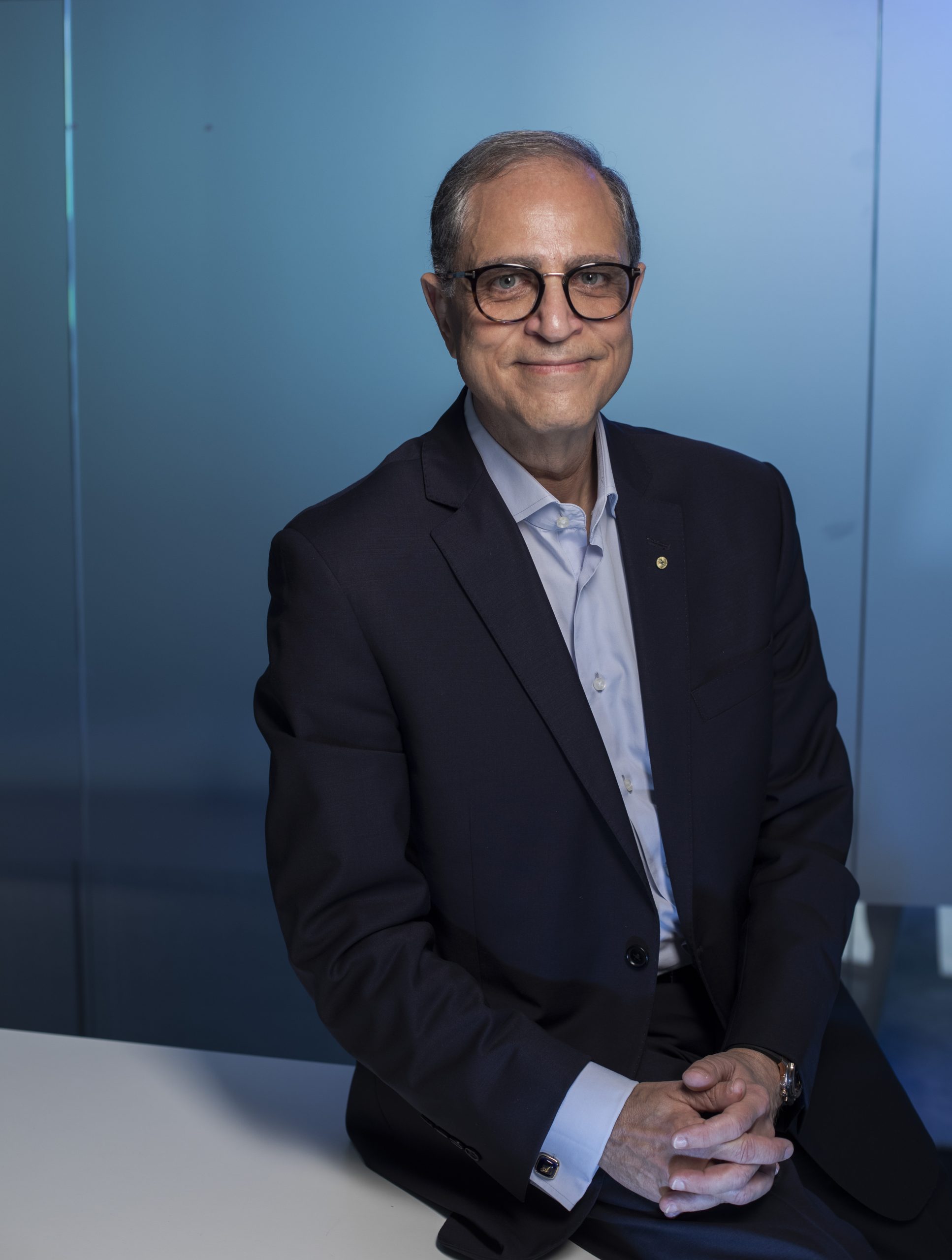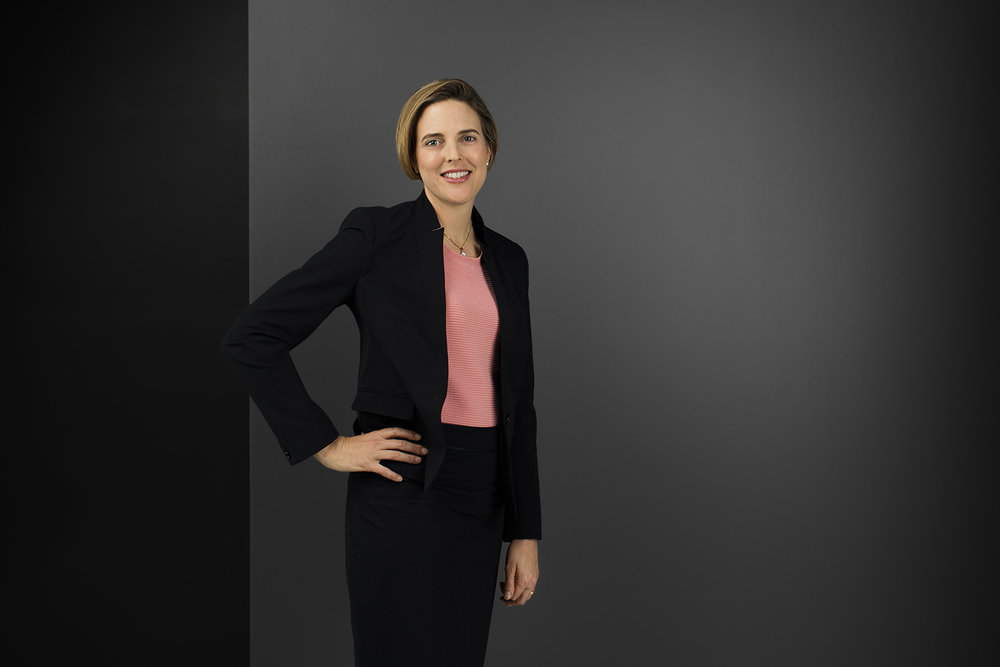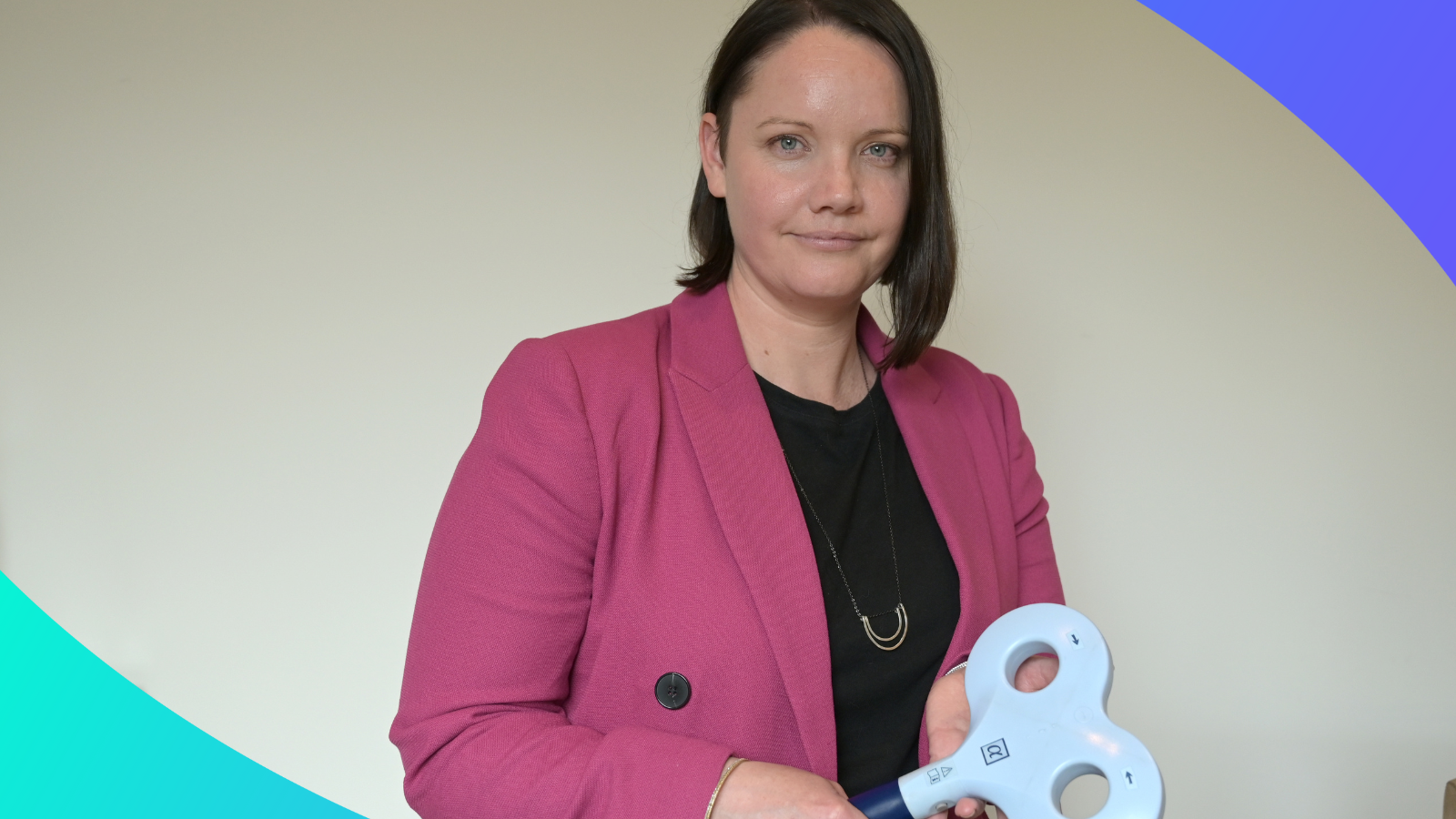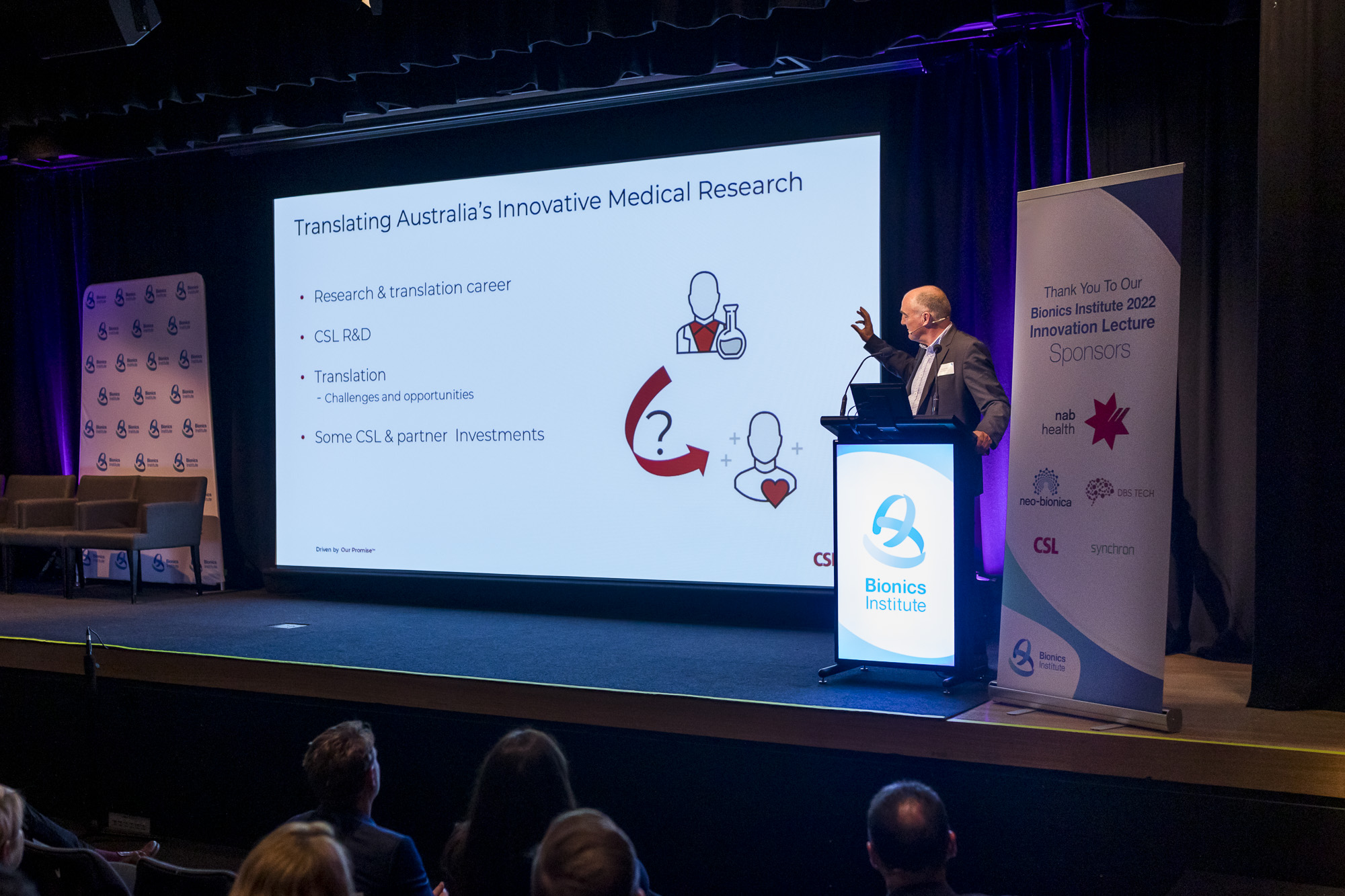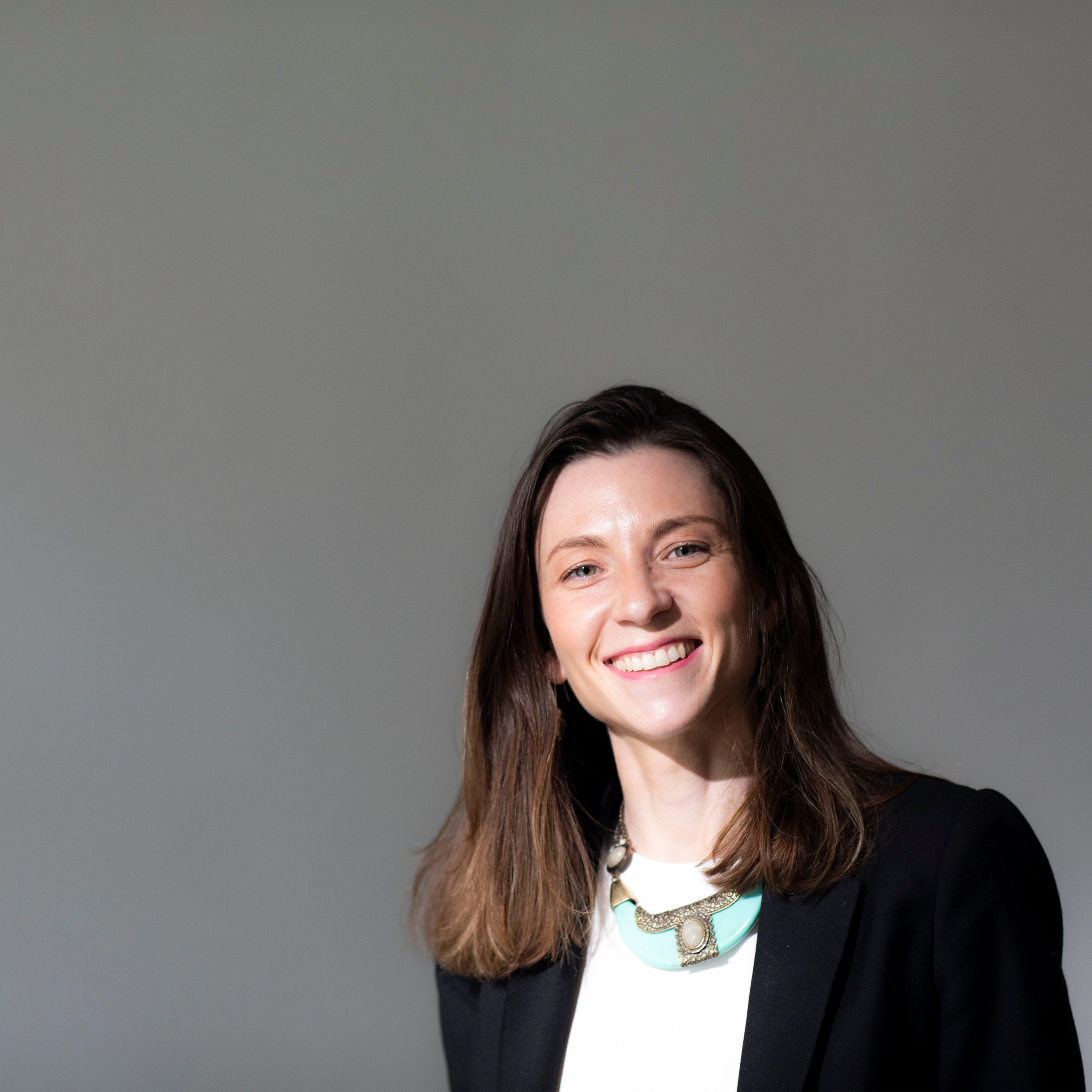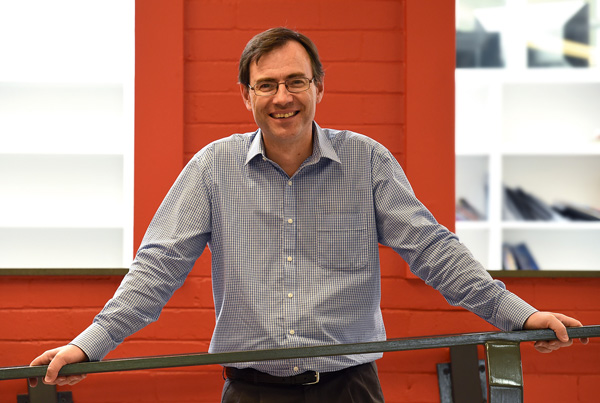Med Tech Talks
Unlocking early-stage biotech: Dr Amir Zalcenstein on Transformative Science and Venture Capital
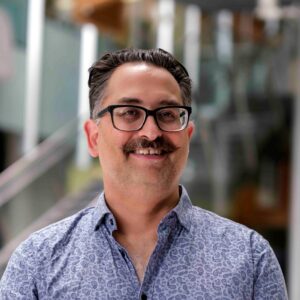
Dr Amir Zalcenstein
Managing Director of SYNthesis BioVentures
In this episode of Med Tech Talks, Robert Klupacs is joined by Dr Amir Zalcenstein, Managing Director of SYNthesis BioVentures. SYNthesis BioVentures is a registered early-stage venture Capital Limited partnerships fund, focused on early-stage therapeutics investing in projects from discovery through preclinical proof of concept and IND enabling studies.
Amir and the team are investing in small molecule therapeutics, biologics and cell and gene therapies for conditions with significant unmet need. Their aim, to accelerate the development of cutting-edge therapies and technologies, ultimately improving patient outcomes and delivering value to their investors.
Along with a PhD in molecular biology and an MBA, Amir has an extensive background in healthcare and international operations experience, having previously been head of business development for BiondVax, CEO of Amorphical and SoluBest, and a healthcare investment manager at OneVentures.
In this episode you will hear about:
More information:
Learn more about SYNthesis BioVentures.
00:00:00 Robert Klupacs: I’m delighted to welcome today’s guest, Dr Amir Zalzenstein, managing director of SYNthesis Bioventures. SYNthesis Bioventures is a registered early-stage venture Capital Limited partnerships fund, focused on early stage therapeutics investing in projects from discovery through preclinical proof of concept and IND enabling studies. Amir and the team are investing in small molecule therapeutics, biologics and cell and gene therapies for conditions with significant unmet need. Their aim, to accelerate the development of cutting-edge therapies and technologies, ultimately improving patient outcomes and delivering value to their investors. Along with a PhD in molecular biology and an MBA, Amir has an extensive background in healthcare and international operations experience, having previously been head of business development for BiondVax, CEO of Amorphical and SoluBest, and a healthcare investment manager at OneVentures. Welcome to the podcast, Amir.
00:01:02 Dr Amir Zalcenstein: Thanks for having me.
00:01:03 Robert Klupacs: Amir as I hinted to, you’ve got a wealth of knowledge of VC, you’ve been all around the world, you know, the strategic partnership space. Can you tell me the journey about how you finished up at SYNthesis Bioventures?
00:01:15 Dr Amir Zalcenstein: Well, so it’s, you know, molecular biology, et cetera, et cetera. I worked for EY and then went, um, to, you know, for a bit. When I finished my, ah, postdoc, which was hands, uh, down, it was a formative experience because I knew what I never want to do again.
00:01:34 Robert Klupacs: [laughs]
00:01:36 Dr Amir Zalcenstein: And from there I jumped over to industry. I was co-founder of a startup, and then the CEO of that startup became a CEO of another startup. She was like, why don’t you come along and be my head of business development? And so we were, we worked together. We had a pretty fat, uh, term sheet signed with [inaudible]. It fell through, she quit. Long story short, I wound up being the CEO because they couldn’t find anybody else. That’s SoluBest. I was CEO there for three years and pivoted the business from drug delivery to a full service formulation CRO. And I’m proud because our business still exists. That’s what, you know. Um, Amorphical was, uh, uh, another role as CEO. And then the last role I had in Israel was vp business development for BiondVax, and I was part of the team that dual listed that on the Nasdaq. It started out being listed on the Tel Aviv stock exchange. It has a lot of parallels to the ASX, and then we sort of made the jump to, uh, the Nasdaq. And then my wife got a job offer from WEHI, um, and, you know, she’s a much better scientist than I. And she’s particularly an expert setting up high throughput sequencing facilities, right? And so they needed one, and she just finished setting up one. So it was like, well, let’s go to Australia. And so, wound up in Australia around the end of 2014, and the CEO at BiondVax, he was like, let me give you a word of advice, right? If you want to drink the water, live next to the river. And I’m like, what do you mean? It was like, you should go work for a VC or investment company, right? And I was like, okay, well, you know, I hear there’s a lot of, a lot of that in Australia. And so I came in, when I started making connections and people, and people said, what do you want to do? And I was like, well, I’m thinking of working in VC. And uniformly the response was, people would just crack up laughing, like, what’s this idiot talking about? There is no VC, right? There’s no VC. No one’s going to hire you. What are you talking about? Long story short, uh, I wound up talking to John Kurek, and he was like, have you ever met Paul Kelly? I was like, I have no idea who that is when I’m m talking to Paul Kelly on the phone. And he was like, I want you to come up to Sydney because you have operational experience. I was like, okay, so, you know, and the rest of the history, because I wound up working for OneVentures for four years. It was great, you know, uh, a lot of appreciation for what I learned when I worked there. I left there and I went into hedge. You know, I thought that I’m like some genius stock picker, um, which I’m not. Those are the years where if you could get your head around the science, you could predict what stocks did, which is. That’s not the case in reality, most of the time. And I was just a classic Dunning Kruger effect. And I managed to convince this hedge fund to put in what, in retrospect, is a ridiculous amount of money for work. Long um, story short, uh, I, um, had to leave there because unfortunately, I got really sick, sort of. It was. I’m not gonna say it was convenient now. I got cancer, you know, like, it’s not convenient. But, uh, uh, so walked away from that. And then when that was done, uh, I jumped into the sell side and started working with, um, large partners and on some deals, worked with. With Bell Potter as well. We did, you know, pre IPOs, IPOs, secondary, stuff like that. It’s a lot of fun. But after two years and this goes back to the story I told you. I had some offers on the table, one of which was, uh, from a very well-known businessman in WA to run a book of listed equities for me. Okay. And then, you know, like, want you to run a company on the ASX, I went to Andrew Wilkes for some advice. I was like, you know, frankly, both of these feel as tempting as a bullet in the head. And he was like, you’re right, um, and you should come work for me. And that was on a Friday, and I came in on the Monday, and I had the contract by Tuesday and started working for BioVentures as soon as on the first day of 2022. Uh, and the idea was to just set up a venture fund because SYNthesis up until that point had sort of a cash stream. They had SYNthesis med chem that was spitting out cash, and they could find interesting drug development projects and put that cash to work to develop them. But when that, you know, didn’t go away, I mean, it left a whole lot of cash. But, you know, you need to have sort of a sustainable business moving forward. And also something that makes sense from a tax perspective. You know, we decided on an ESV CLP and the rest of his history.
00:06:32 Robert Klupacs: We’ve had Andrew on before.
00:06:34 Dr Amir Zalcenstein: I know!
00:06:35 Robert Klupacs: That was a great. I learned a lot in that. I’ve been known to Andrew a long time, but I learned a lot in that podcast. It was actually a lot of fun. So it was interesting. He told us a little bit about what he was doing. He’s becoming a venture capitalist, but he didn’t actually go into exactly how he was going about it. And so I wanted just to delve in with you a little bit further. SYNthesis Bio is a little different to the other venture funds I think operate in the country. I think it’s structured a little because you’re an ES VCLP.
00:07:01 Dr Amir Zalcenstein: Yeah.
00:07:02 Robert Klupacs: But for our listeners, can you explain why you set up that structure and how you’re going about with your investment thesis? Because you are going much earlier than, say, OneVentures in particular. 00:07:11 Dr Amir Zalcenstein: Oh, yeah, definitely. So, uh, it’s an ESV CLP, and that’s a fairly standard structure. And the idea is really, this was put in place by the government to foster venture capital financing. And the idea is that if you’re an investor, then, uh, any profits are exempt from capital gains tax up until there’s some ridiculous threshold. If you make more than $200 million off your investment, then you have to start paying capital gains. And if we have that problem, it’s a good problem.
00:07:46 Robert Klupacs: A great problem.
00:07:47 Dr Amir Zalcenstein: Uh, but in return you have to invest into Australian entities. You have to invest in such a way that most of the money is spent in Australia and most of the people are employed in Australia, which is fine for us because most of the science that we look for is here in Australia. We think there’s plenty of transformative science here. Lack of science is not the problem, let’s put it that way. And so in terms of what are differentiating factors? Well, one, our stated strategy is that we are not averse to going earlier than others. Um, we will put some money to work in terms of discovery. In fact, we have into a deal. We didn’t publicize it too much. It’s a company called Imitex and they’re just doing really early stage discovery at this point. I don’t think there’s many, well, there aren’t any other VCs that are willing to make those bets. Um, but what we’re looking for is early stage transformative science. That’s on the one hand. And so we’re not scared if it’s preclinical. We’re not scared like, we know how to analyze the science and feel comfortable around how good it looks to us. Right? That’s number one. And we also have the confidence that we can commercialize it and extract at least what we put in fairly early, you know, because, you know, the SYNthesis Group has been very successful doing preclinical deals. And so we know that there are certain hurdles that the science needs to hit, that if all else fails or not all else fails, if things work out and we need to pull the cord, then we can exit that as a preclinical project because we already have that track record. The other thing that I think differentiates us from other venture funds is, I’m going to say this, our stated willingness, because we’re still early and we haven’t had the chance to really do this, but we’re not allergic to the ASX, which is the case with so many other VCs in Australia. And the reason for that is that I do think that, and we’ll get to that because, uh, there is a disconnect between early-stage science, early stage financing, venture financing, and the ginormous pool of capital that is the Australian capital markets and powered by superannuation savings. And so you have this gigantic pool of money and you have great science. For whatever reason, there is no organic connection between them. And so what we are hoping to do is to be the ones who provide that continuity of capital. We will invest early. We’ll bring things to the point where they’re already ready to go into humans, and we’re then, at that point, happy to engage and sort of pre-IPOs and have public markets take the baton for, uh, the rest of the relay race. Um, you know, I’ve worked in public markets. I love the ASX. I think the ASX is a great exchange, gets, um, a bad rap, and for some good reasons, there’s not enough expertise, et cetera, et cetera. But if you’re not going to create the expertise, if you’re not going to create the good companies that come in, it’s never going to happen. Right. With $4 trillion waiting on the sidelines. Uh, we don’t need to go to the Nasdaq to finance projects all the way. We just need to create that sort of that continuity.
00:11:28 Robert Klupacs: One of the reasons I wanted to get you on is because what you’re doing is pretty cool. But we talk a lot on this podcast about everyone says Israel, the most innovative country in the world. Look what they’re doing. You’ve come through the Israeli ecosystem. You’ve come here, uh, what is it? And you just mentioned the ASX and say it gets a bad rap, but it could be used more. What do you think the differences are? What do you think the strengths of Australia versus Israel are, and vice versa? And what can we both learn from each other?
00:11:55 Dr Amir Zalcenstein: Well, I’ll tell you what. So Israel has, compared to Australia, the amount of spend on R & D is, in order of magnitude, higher as a percentage of GDP. It’s just a reality. And the biggest spender on R & D for years has traditionally been the defense establishment, for obvious reasons. And so you have things from avionics to software, and you also had things that were going into biology and life sciences as part of defense spending. And so you have an organic pipeline of innovations that are coming through. Right. So that’s one thing, and, um, we can leave that to the side. The other thing that has been quite transformative in Israel, and I’ve been talking to the wall about this for the last ten years that I’ve been in Australia, is that. So what happened in Israel in the mid nineties was the collapse of the Soviet Union. What happened was that about a million and a half people showed up, doctors, engineers, the vast majority with very advanced degrees, with zero experience in private enterprise. They just, like you talk to them about equity, financing, whatever. It’s like, I don’t understand any of it. They understand the science. And so the state was faced, uh, with a pretty acute, you need to give people, you know, something to do, right? There’s a limit to how many railway engineers you need in a tiny country, right, or materials science, scientists, et cetera, et cetera. And so what was set up was the incubator system. And the incubator system is like, when people talk here about incubators, just, I get, I get pretty annoyed because I’m like, that’s not an incubator. So an incubator. So an Israeli incubator is a joint venture between venture fund or industrial, let’s say, Teva Pharmaceuticals, and the government, right? And the government will provide 65, 75% of the financing, the commercial partner will provide the rest, and will provide the personnel and the, um, um, expertise, right? And so when you, when you are a project walking, uh, into an incubator, and remember, the audience for these people, for these entities were people that know nothing about entrepreneurship. They have a good idea. They think they can make a company out of it. You go to the incubator, and incubator says this: You see that room over there? This is where you have all your tiny machines that you can use, and you go over there and you invent, and we will give you support in business development, IP, management will help you raise the next round, will help you whip this thing into something that’s investable. And in exchange, we’ll take 50% of the equity and we’ll put, in aggregate, about a million dollars USD. Right? And so what happens is that these ideas wouldn’t have gone nowhere but for being able to be financed. And so you have, but then you have these incubators that some of them made just ridiculous returns because they got, they rightfully got that equity. That’s what that equity is worth. It’s worth half the equity, that sort of help. And so that spawned a groundswell of startups, Solubest, for example, I used to be the, um, CEO of that started as a, as an incubator project that was started by, you know, a bunch of Russian chemists. And in fact, I was, when I was CEO, I was still, it was just me, an Israeli secretary, and 13 Russian chemists, which is, you know, it’s an experience. They don’t take orders from you.
00:16:03 Robert Klupacs:
00:16:04 Dr Amir Zalcenstein: They’ll take suggestions. Yeah, yeah, it’s, uh, an experience.
00:16:08 Robert Klupacs: Ah cool. So what? So what? See, that’s the Israeli model. And so, yeah, incubators, yes, but what can we do better in the incubation model?
00:16:15 Dr Amir Zalcenstein: And then VCs came along and VCs there. The other thing. Uh, okay, well one last point about that is that, is that Israel never considers itself to be a, like, the whole market is never a thing. Right? There’s not enough people, nobody cares. Right. So all startups in Israel start with an eye to overseas and all VCs start with an eye to syndicating offshore. Then you had the onset or the rise of Israeli VCs in the late nineties, early two thousands, and some incredible innovations came out of that. People make money hand over fist and that just gave it the momentum. I think that what happens here is I don’t think with the exception of Canva and I don’t know who are the institutional investors behind the VCs that invested into Canva, but they weren’t overseas. Right. So you don’t have that virtual cycle has yet to really gain momentum of: let’s invest in Australian VCs, make just oodles of cash, spit some of that out to buy boats, but the rest will invest back, uh, into VCs. We haven’t seen that yet pick up steam, you know, hopefully.
00:17:39 Robert Klupacs: It’s the journey. Just wanted to sort of delve into some of the specifics of uh, SYNthesis. So you’ve got a uh, we did a bit of reading on it and on the website it says you have a particular focus on the Asia Pacific region. In uh, particular you recently announced the formation of AdCella in collaboration with AdAlta, which is a public listed company which aims to bring innovative Asian cellular immunotherapies to western markets. Pretty cool idea. For those of our listeners not familiar with these type of drug therapies, can you tell us what you hope to achieve with the partnership and maybe also a little bit about what the AdAlta technology was because I had a very, very small amount to do with it 20 years ago.
00:18:18 Dr Amir Zalcenstein: So AdCella has not much to do with the ibody platform. The value proposition there, I have to choose my words carefully, unlike most of the time when I open my mouth because it’s a publicly traded company. Um, the idea is if you look at the, particularly the Chinese economy right now, VC financing over there has gone over a cliff. There are restrictions on using China-derived data in – order to approve drugs in the US and Europe. And so what happens is – what happened was that over the last 10, 15 years, immense amount of capital were invested into Chinese biotechs, particularly in things of cell therapies and biologics, and they developed truly world class expertise. Unfortunately, you can’t use a lot of data that they’re generating to bring that to market in the markets where it counts. Right. And so the idea is that we can partner with these companies and take out a license for rest of the world. They can keep China because marketing a drug in China, that’s..
00:19:40 Robert Klupacs: Hard work.
00:19:41 Dr Amir Zalcenstein: You know, like, um. And so the idea is to take those, um, to take that, to take those projects, strike partnerships and do some of the development here in Australia, then move it on to the US as a westernised technology. That’s really the idea. There’s really a massive. That leverage. It’ll uh, come to me. Yeah. But it’s an opportunity in terms of being able to get world class science that is now in a capital deprived environment and leverage it towards the US.
00:20:19 Robert Klupacs: It sounds like a really, really smart thing to have done. Probably because of your background and Andrew’s Chinese connections as well. A lot of people wouldn’t have had that. So that came together. I didn’t mention it, but I’m assuming then you’re using that third leg of the stool as the ASX capital markets to actually get behind that story or?
00:20:35 Dr Amir Zalcenstein: Well, yeah, I mean that’s. I will leave the capital market strategy of that particular thing for um,
00:20:40 Robert Klupacs: The next podcast.
00:20:41 Dr Amir Zalcenstein:
Well, the next podcast. Or, you know what if you do ask Tim Oldham, I think he’s in a better position to elaborate on that,
00:20:52 Robert Klupacs: Ok yep
00:20:53 Dr Amir Zalcenstein: On that strategy. I’m not in, I’m not in a position to comment on that.
00:20:57 Robert Klupacs: No, that’s fine. But it’s a cool thing where you’ve actually taken an underserved technology, adding expertise to it and creating a value proposition because your skill sets. Sounds really cool.
00:21:09 Dr Amir Zalcenstein: Look, some of the data is just stellar. Right. And right now, if you are a Chinese company and you want to commercialize in the US, well, you know, it doesn’t matter what, how good your data is, they don’t want it.
00:21:22 Robert Klupacs: Yep, yeah. Which is sad.
00:21:23 Dr Amir Zalcenstein: Um, yeah, it is what it is.
00:21:26 Robert Klupacs: Moving, just moving a little bit. So we work in the medtech space, you are in the biotech space, and in both sectors, you know, strategic investments, uh, are critical for scale. From your perspective, and now talking about evaluation, how do you, your fund approach the evaluation of early-stage companies? Because everyone says it’s going to, everything is going to be a unicorn. We know they can’t be the case. So what are the key factors you specifically look for with your experience when you’re looking at technology, which is early, might have a lot of validation data, but you’re seeing something. What are you looking for? Because most of my friends and most of the people listen to this podcast, they’re very early in their life, they’ve made a discovery and they want to get money. And people say, oh, you haven’t got x, y and z, so love to hear how you go about it. What you look for?
00:22:13 Dr Amir Zalcenstein: Well, I look for is transformative science. Right. And I was, I was actually talking to somebody yesterday. And he’s like, what’s your expertise? And my response was, um, uh, like, transformative – I know it when I see it. Like they used to say about, uh, yeah, uh, other things. Right. Um, like, I know transformative science when I see it. And, and one of the things that for me, makes for transformative science is that it makes other parts of the development cycle easier.
00:22:50 Robert Klupacs: Yep.
00:22:51 Dr Amir Zalcenstein: Right. And so if you have. And so I’m, I mean, a good example I’ll give by example, right, is the easiest. So S2N, which we are hopefully closing over the next couple of days, uh, it’s a cell therapy for, uh, the treatment of Alzheimer’s. That has a transformative scientific discovery at, uh, its core, which is there are neuronal precursor cells in hair follicles. It doesn’t make sense, it’s not intuitive, but that’s the reality. It’s probably some sort of, uh, evolutionary abnormality that that’s the case. But if you can isolate these things, these precursor, uh, uh, neuronal precursors are identical to the stuff that’s being produced inside the hippocampus and the strata negra in the brain. And so the idea is actually pretty simple. Let’s take that, extract it, stick it back into the hippocampus. Of course, easier said than done. Uh, but all the pieces that are then concatenated following that pivotal scientific discovery, actually off the shelf. Right? Like, uh, how do you get the follicles? Well, you go to a hair transplant clinic. They know what to do. You take that, and then from there, you put it into a closed loop manufacturing system that’s been used in dozens of commercially available cell therapies. And then you take that and you use it. And to inject it into the brain, you use something known as stereotactic surgery, which neurosurgeons are well versed in. Instead of making 18 holes in the brain, you just have to do two. It’s sort of like you take things off the shelf, you dumb them down, actually. But it’s all due to the fact that you have transformative piece of science at the core. Um, not all projects are like that. But for me, that’s what I’m on the lookout for there’s another project that’s super interesting. Um, again uh, we have a CDA. So I don’t know if I can discuss that. But I remember seeing the science and just going “that’s it!, that’s clever enough that this should work”.
00:25:17 Robert Klupacs: But the trick is what you talk about. If you can see it, you can click your fingers. I know it is. But then how do people know to get to you and then how do you know to get to them? Because it seems to me it can be all this great science out there. But if it doesn’t make it to you to actually put your eye over it, it’s not going to get through to the next stage..
00:25:33 Dr Amir Zalcenstein: We have pretty robust tentacles out there. Andrew is uh uh, associate professor at Monash and WEHI and Melbourne Uni. And so we get things coming through, we get things from other VCs that know that we have that sort of expertise. And so we have a great relationship with people like with IPG or people with Uniseed. And you know, let’s say a small molecule project comes in and we have some of the best small molecule medicinal chemists in the business working for um, both the fund and for research. And so you know ah, we are a natural next number to call if something like that interesting like that walks in. And so you know, we get to look at quite a lot of stuff. I mean it just comes, it just comes to us, I guess. Um, yeah.
00:26:31 Robert Klupacs: How many people in the team? It’s you, Andrew…
00:26:33 Dr Amir Zalcenstein: So uh, it’s Andrew Wilkes, it’s Fabio Toratti, it’s myself and Martine Keenan. She’s in WA, she’s a medicinal chemist. She used to be with um, Lilly. Um, and she’s amazing. Right. Um, so the four of us are really the core team. And then um, we have the ability to pull in expertise from other employees of SYNthesis research that are technically sort of seconded into portfolio companies. Um, so if we need immunology expertise, we have immunologists that work and are paid by research, but work for um, one of our portfolio companies. And we can just say look, we have a question. Take this out of, you know, take a few hours to answer this and it’s fine, you know. And so um, it’s kind of like ah, it’s a very flexible structure, um, that lets us use the expertise we need when we need it. And so um, that’s how we, we look at things.
00:27:48 Robert Klupacs: Pretty cool. I mean we’re going to be running out of time because I could talk to you all day, so.
00:27:51 Dr Amir Zalcenstein: I can talk to you all day, it’s fine.
00:27:53 Robert Klupacs: There’s a couple of, couple of key things I would love to get your um, your views on. You know, particularly we mentioned earlier about Israel versus Australia and you know we’ve had lots of people on here talk about the great science and da da da da. Sometimes it’s sob stories, sometimes there’s great successes but it always comes up what, you know, Australia should be doing much better.
00:28:12 Dr Amir Zalcenstein: Yeah.
00:28:13 Robert Klupacs: Um, from your perspective, I mean you’ve been here ten years.
00:28:16 Dr Amir Zalcenstein: Yeah.
00:28:16 Robert Klupacs: You’ve seen some as you said some great transforming science. So is that true? You know, do you think that we should be doing it better and if we aren’t, what are we doing well and how can we improve it?
00:28:27 Dr Amir Zalcenstein: So you know,
00:28:30 Robert Klupacs: We’ve only got 30 minutes.
00:28:31 Dr Amir Zalcenstein: Okay. We can go from the macro all the way to the micro. Right? I mean like what? And so let’s leave the macro to other people. Right. But the easiest way for me to think about this problem is: look at other markets where this works, right? Where there is an organic pathway from academia through to early-stage VC through to late stage VC and all the way into public markets. And at any point a pharma company can come in and buy a project from public markets onto the market, uh, onto market at drugs. And there is a crucial piece that’s missing here and that is uh mezzanine funds and crossover funds that are healthcare specific. And that is really the missing piece because in the US you have, yeah there’s universities that have great commercialization operations and yeah so that’s there but then you have the early stage VC’, they’ll come in and pick up these projects. They’ll put a lot of capital to work around that. The next thing that happens is later stage VCs will come in and then the mezzanine funds will come in and finance that crossover from private to public. And we don’t have that here. We have, last time I checked there were two crossover funds and they weren’t healthcare, uh, related. And so what needs to happen is one: a willingness of Australian VCs to interface with the ASX. But that’s not going to help unless there is a movement of funds towards that missing piece of uh crossover funds. And so I mean the ideal scenario is that this fund one will be great and things will work out and then naturally there will be a fund two that will be, that will use fund one as a funnel and will act as a crossover fund and we will be sort of the first ones doing it here. The funny thing is that is at least in my mind, um, until we do this grand experiment, we won’t know. But I don’t think that government intervention or attempt to pick winners and uh, or you know, or do target targeted efforts are going to do all that much good. What we need to strive for and facilitate is a structural change in the biotech financing market. And it’s uh, to my mind it’s actually quite simple. These funds need, it’s only going to take two, I think between 250-500 million dollars of crossover money to start that market going. And so once that market’s going and people are making money in listed markets, on Australian science, on Australian biotech, you will have more healthcare investment firms that are focused on the ASX. And so once you have more of that, you will have more cycling of money. That money will cycle back to the VCs and the VCs will be, be able to pick up more early-stage projects and then that virtual cycle starts, right. And so it’s two things. When you need the crossover funds, you also need the willingness of existing VCs to interface with the ASX. And I think one of the things that has been sort of missing from the focus of the way that public money has been deployed into the sector is that the mission has been, well, find commercialise good science. I don’t think that’s a good state, that’s not a good mission statement, right. If you are going to be deploying capital into the sector is create a continuity of capital that allows um, or rationalise the financing environment. That’s number one priority. It’s not commercialise great science. If you have a rationalised financing environment, all that happens on its own. Right. And so, um, you know, we’re hoping that fund two will be, you know, the first. If we’re the second crossover healthcare fund, I’m um, more than happy. I’ll be happy to be the third or the fourth. I have no problem with that.
00:33:09 Robert Klupacs: It’s interesting because I mean you’re not the first to have said that on this podcast and heard this for many years. But the challenge I think for the Australian market, they are relatively short term. Biotech by its very nature is long term. And you’re coming in early, so perhaps you’re getting it, incubating it, first in human data, listing on the stock exchange. And so people say that’s fantastic, that’s sexy. And you know, we’ve had some great examples of successes on the ASX, but a lot of them you look at Ophthea now you look at Mesoblast, they’re just about ready to go bezerk or die.
00:33:41 Dr Amir Zalcenstein: Right? Yeah.
00:33:41 Robert Klupacs: But they’re both 20 years in the making.
00:33:43 Dr Amir Zalcenstein: Yeah.
00:33:44 Robert Klupacs: And so a lot of the funds you speak to, and I speak to the same, you know what, putting money in, and I’ve got to wait 20 years. And, yeah, I, uh, put in 20 years ago $1, and it’s now worth ten. My IRR is still negative. I can’t afford to do that. So how do you respond to that?
00:33:59 Dr Amir Zalcenstein: Well, nobody said you have to be in this journey from, you know, to start to finish. That’s not, that’s not how this goes. Right.
00:34:06 Robert Klupacs: That’s the point I wanted you to make, because everyone says, oh, I’ve got to be there the whole turn.
00:34:10 Dr Amir Zalcenstein: Uh, no, you absolutely don’t. Right. I mean, that’s. That’s really the beauty of public markets. You’re in it for as long as you want to be in it. You can have a variety of strategies once you have, um, just look at what’s going on in the NasDaq. You have healthcare funds that employ a variety of strategies to generate returns in healthcare investing. You know, some people will just invest in the catalyst events, and, you know, they think they have the methodology, they have, you know, they’ve. They know where to go long, they know where to go short. They’re in it for six to twelve months, and that’s done. You know, it’s fine. Um, and then you have people like perceftif. They’ll buy in. They’ll buy in, and they’re not out until the thing is taken out by a pharma company. They don’t care how long it takes. Right? Like, there’s room for for so many strategies you don’t have. I mean, where does it say that you have to wait till the end? You have to wait until you think the share price hits your goal of where it needs to be, and then you walk away. That’s all there is to it.
00:35:19 Robert Klupacs: You make it sound so simple and logical.
00:35:20 Dr Amir Zalcenstein: Look, I made money investing on the stock market. It’s not that I haven’t, you know, it’s just that, you know, it’s like, I mean, I made a lot of money investing in Nuren, right?
00:35:31 Robert Klupacs: Yeah.
00:35:32 Dr Amir Zalcenstein: I bought at 0.75c Came out $5. It was fine for me. Right?
00:35:38 Robert Klupacs: Yeah, exactly. You still made money, right?
00:35:40 Dr Amir Zalcenstein: Yep.
00:35:41 Robert Klupacs: So, last question, because, you know, running out of time, there’s so much I could talk to you about, but I, uh, know you’ve got investments to make.
00:35:48 Dr Amir Zalcenstein: [laughs] Oh yeah.
00:35:49 Robert Klupacs: The last question that we’re going to finish up on today. So we’ve got lots of, we know we’ve got lots of young innovators and entrepreneurs listening. So for any of them wanting to break in, like the Russian scientists that you spoke about before, but the Australian equivalent, what advice would you give them based on your experience in venture capital and business development generally? I mean, you must have seen the good and the bad, the ugly. You’ve seen success, you’ve seen failure. I’m fascinated to see what you would say to our listeners.
00:36:13 Dr Amir Zalcenstein: As in they want to break into, um…
00:36:19 Robert Klupacs: They think they can, you know, you come across as this guy, a university professor, I made the discovery, I’m going to make gazillions, right. I’m just going to put this into a company and away I go. We know that’s not the case.
00:36:29 Dr Amir Zalcenstein: Yeah, no, it’s absolutely not the case. Oof. I mean, there’s so much, I mean, so one of the things is be, uh, realistic, um, about what you can and can’t do, right? If you’re a scientist and um, you know, you think that you have, you know, that you have a good technology that is commercialisable, you have to realise that… okay, so rule number one of startups, right? And I learned this. So I did my MBA at Technion, uh, in Israel, and it was like a startup focused MBA. And I remember, it’s the funny thing is like the course that I hated the most, right? I just hated it, right? And I hated the lecture. I couldn’t stand her. But that’s the only thing that stuck is like she said, um, it was a course on entrepreneurship and she said the key to successful startups is bringing as many smart people on board as you can. It’s a pretty general rule, but I find that still a lot of people don’t obey that. Right. Don’t like, you know, don’t worry about being, uh, that’s, you know, the other side of that coin is don’t worry about being diluted, right. Having 100% of zero is still zero, as we all know. But, um, you need to have the willingness to understand that you don’t know everything and that there are other people that need to be brought on board into this boat and committed to this journey, right? And that means as many smart people as you can possibly get, the better. There’s no upper limit to smart people that you need to join you on this journey, right? Anybody who thinks they can do this alone don’t know what they’re talking about anybody who’s worried about, like, about. I mean, I hear the word dilution, right? Anywhere in the first ten meetings, I was like, that’s it. I’m like, you know, I’m off scrolling on Reddit because I’m not listening to you anymore. We’re done. Right? Um, it’s just, uh. It’s so. You know, that’s. That’s kind of, um.
00:38:54 Robert Klupacs: You know, to be honest, that’s one of the most succinct bits of advice we’ve had for this whole podcast series. At the end of the day, there’s no. There’s always smarter people than you somewhere.
00:39:03 Dr Amir Zalcenstein: There’s so many smarter people than me.
00:39:05 Robert Klupacs: Uh, I doubt that. I doubt that.
00:39:07 Dr Amir Zalcenstein: Ask my wife. She’ll tell you.
00:39:09 Robert Klupacs: Your kids, definitely.
00:39:11 Dr Amir Zalcenstein: But, you know, it’s just. It boils down to recognising you don’t know everything. You’ll never know everything. You need as much intellectual firepower to get this over the line.
00:39:24 Robert Klupacs: That’s a fantastic way to end this podcast, Amir, I’ve got to say, thank you so much for giving us your time, your wisdom. Uh, I think we could have talked for another hour, at least.
00:39:32 Dr Amir Zalcenstein: Uh, it’s all good.
00:39:33 Robert Klupacs: And, uh, to our listeners. Hit his website. He’s a nice guy to chat to. Um, and he’s more than happy to give advice, but I think you’re getting pretty busy. To our listeners. I hope you enjoy listening to a, uh, quite unique individual today, and I look forward to introducing you to our, uh, guests in future podcasts. There are links to everything we talked about in the show notes, and we look forward to welcoming you next time.
Listen to other episodes of Med Tech Talks here
